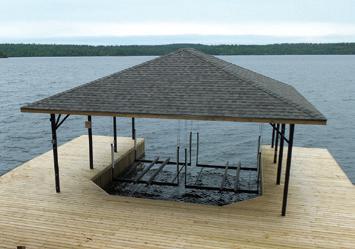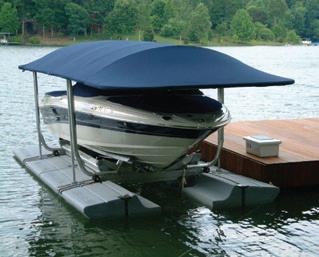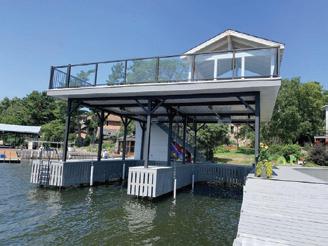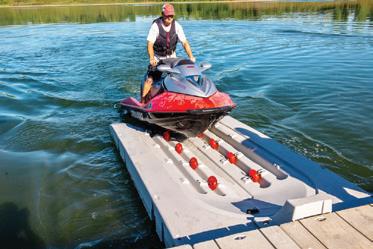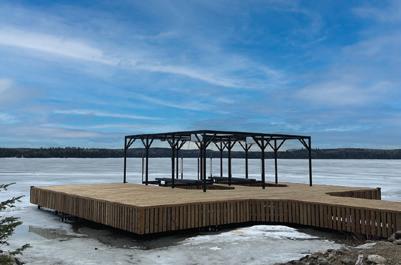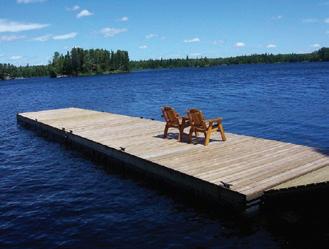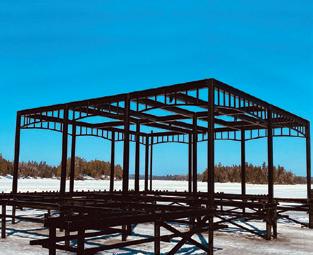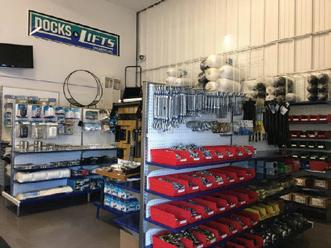






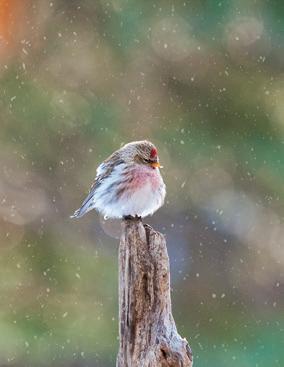
keeping your membership profile
matters 7 New hires: LOWDSA’s approach on giving experience/entry level positions 8
stop the spread of invasive species 10
In the District
levels: Fall/winter water level management 12
die off a concern at a few locations in the region 13



GARTH COLLIER
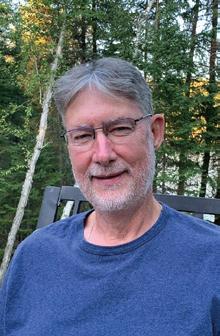
On November 20, the sun rises at 7:49 a.m. and sets at 4:39 p.m.—a total of 8 hours and 50 minutes of daylight. The average temperature for this day will be around -2°C for a high and a low of -9°C. The daylight will continue to diminish towards the solstice. And so will the temperature. Brrrr! But we know this. We have lived it. We also know that the cold weather brings people together seeking warmth and connection. The holidays are on the way with big family meals and endless fun frolicking in the snow.
When the first winter breeze blows through the trees, nature puts on a spectacular show. The stillness of the frozen air heightens each of the senses, making the little details of a glimmering blanket of snow or a chickadee’s song even more inspiring. The mystery of silence that settles in the forest as the soft flakes of snow waft downward has been immortalized in Robert Frost’s poem, Stopping by Woods On a Snowy Evening. As the narrator stops to “watch the woods fill up with snow,” he reflects on this silence which is contrasted with the clanking of his horse’s harness bells, “The only other sound’s the sweep; Of easy wind and downy flake.” Being a listener to the falling snow in a forest that is infinitely quiet is a remarkable, memorable experience.
The Lake of the Woods area is a paradise for winter enthusiasts. There is an abundance of fluffy snow with plenty of space to find both exciting adventures and solitude. If you’re seeking a family winter escape, you need to look no further. It just might possibly be the best time to experience the unparallelled magic that our area offers.
Dedicated anglers don’t stop for the hard-water season. In fact, ice fishing often makes it easier to experience exceptional fishing. The Lake of the Woods area is one of the best places to experience this unique form of angling.
It’s time to get those bird feeders ready. Winter is a great time to enjoy peace and quiet in nature while admiring the resilience of our year-round resident birds, including Canada jays, chickadees, nuthatches, pine siskin, redpolls, grosbeaks, woodpeckers and more. You may even encounter iconic northern species like the snowy owls. Or you might be lucky enough to be visited by some flying squirrels who explore the feeders at night.
The possibilities for winter enjoyment are endless. There’s snowshoeing, cross country and downhill skiing, snowmobiling, skating, pond hockey, or just sitting around a cozy fire with family and friends.
On behalf of the Board of Directors and staff at LOWDSA, enjoy the beauty, share the beauty, make memories! And most of all, have a great holiday season and a fantastic winter experience.
See you in the New Year!

BRIE MCCARDLE
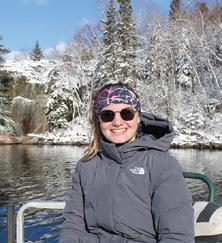
The wonders of winter are approaching. The final leaves are letting go and readying to transform our landscapes into a serene wonderland, with snow-covered trees and frozen lakes. This season offers unique opportunities to appreciate the lake’s beauty in a different light, quite literally. The season can be long and cold, but I encourage you to get outside and get involved in all things our communities offer.
It seems crazy to be writing this while in a sweater on my deck in the sun, but are you ready for the holiday season? I have officially bought my first Christmas present, and my family kicked off our favourite tradition, Secret Santa. I love doing this as it adds an element of surprise to Christmas and makes gift giving more thoughtful with personalized and meaningful gifts. Christmas can be chaotic, and this relieves the pressure gifting everyone a special something.
With the holiday season approaching quickly, get on top of your holiday shopping by giving the gift of a LOWDSA membership. Membership is a way of supporting the sustainability of the land and lakes in the vast Lake of the Woods area. There are many perks of being a LOWDSA member such as the five issues of Area News magazine, access to classified advertising, savings on events such as IISD-ELA tours and pine seedling sales, volunteer opportunities, resources for sustainable living, and much more. If you know a nature or lake-life enthusiast—this is the gift for them. You can purchase by giving us a call at (807) 468-8715 or by emailing membership@lowdsa.com.
In the spirit of the holiday season and spending time with our loved ones, the LOWDSA office will be closed from December 25 to January 3. Emails and messages will be answered upon our return to work in the new year.
Get your cameras ready! Embrace the charm of winter by showcasing the picturesque scenes through our photo contest. Capture special moments that matter to you. Each photo serves as a snapshot of experiences, allowing you to reflect on the memories and emotions tied to those moments. The ability to look back at these captured moments can remind you of the beauty in life and the stories that shape our Lake of the Woods community.
This year's photo contest themes are: Wonders of Wildlife, due January 25; Ice Fishing Adventures due March 21; Sunset Country May 2; Loo with a View July 25; and Life at the Lake due September 19. Send your photos with a brief caption to communications@lowdsa.com. All photos must be over 1MB. The winners will be printed in Area News magazine as well as posted on our social media.
Our stories connect us. We are always looking for member stories for Area News. Share your favourite cottage memories or how lake life is important to you past, present and future. You can send your story ideas and photos to editor@areanewsmagazine.ca.
It’s a time for cozy gatherings, festive celebrations and outdoor adventures that remind us of the joy found in simple moments. The opportunities to explore our area and what is has to offer are nearly endless and won't disappoint! Keep in mind the importance of preserving the land and lakes during our favourite winter activities. Any questions or concerns, we are here to help you and help our region remain beautiful for generations to come.
Cheers to a season filled with wonder, joy, and the spirit of togetherness.

The Lake of the Woods area and LOWDSA’s activities take place in the territory of the Anishinaabe Nation in Treaty #3 and the traditional homelands of the Métis Nation of Ontario. The beautiful lakes, shorelines, and environment that we enjoy should be respected for their cultural significance and history.
PUBLISHED BY
Wake Marketing Inc., 140 Main St. S., Kenora, ON P9N 1S9
Publisher: Mike Greaves, mike@areanewsmagazine.ca
Editor: Leanne Fournier, editor@areanewsmagazine.ca
Art Director: Shayla Smith, shayla@wakemarketing.ca
Design & Layout: Mike Newton, Ashley Pereira
Advertising: Deb Polakoff, deb@areanewsmagazine.ca
DISTRIBUTION & MEMBERSHIP
Lake of the Woods Area News is published five times per year and is mailed to LOWDSA members. To receive Area News visit lowdsa.com and become a member today. TOLL-FREE 1-888-265-9784 PHONE (807) 468-8715
Publication mail agreement #43107013. Printed in Canada.
© 2024 LOWDSA. All rights reserved. The contents of this publication may not be reproduced by any means, in whole or in part, without prior written consent. Statements of fact or opinion are the responsibility of the author and may not represent the view of LOWDSA or Wake Marketing Inc.
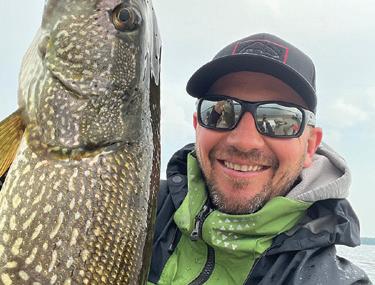
grew up in Kenora, on the shores
Woods. He makes his living as a professional angler, competing on the Bassmaster Elite Series in the United States. He is also a part-time guide, outdoor writer and photographer. His passion for fishing started at a young age while their family spent the summer at their cabin on Echo Bay. He graduated from the University of Manitoba on the "keep Mom happy" program (general arts) and today, spends much of his time promoting fishing. When he is around home, you can probably find him on Lake of the Woods.
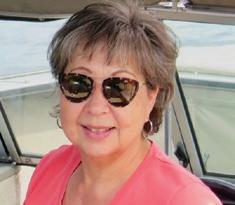
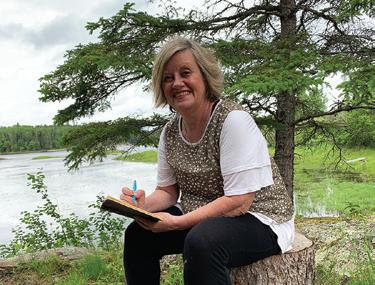
is a freelance writer who pens articles for most of the magazines in the region, while also acting as editor of the Lake of the Woods Area News. An avid gardener, environmentalist, and outdoor enthusiast, she enjoys an ever-changing picturesque view from her riverfront home, while writing for clients and dabbling in fiction, creative non-fiction and poetry. Leanne’s non-fiction story, “Love is Like Peanut Brittle”, was recently published in an anthology where authors from across the globe explored the question “What Is Love?”
Lori Nelson is a life-long Lake of the Woods resident and the recently retired Director of The Muse | Lake of the Woods Museum and Douglas Family Art Centre. In her 30+ year career in the cultural sector she had the opportunity to explore and research the history and people of this area. Writing the “back page” article for the Area News allows her to share her love of both this place and its stories.
Garth Collier
Sharon Gurney
IISD
Experimental Lakes Area
Lake of the Woods International Sailing Association
Connie Larson
Mimi Mastromatteo
Brie McCardle
Quinn Miller
Drew Monkman
Teika Newton
Jeff Polakoff
PRESIDENT: Garth Collier, Schnarr Lake
PAST PRESIDENT: Christine Semenchuk, Bigstone Bay
TREASURERS:
Carley Fyke, Welcome Channel; Jeff Rempel, Pine Portage Bay
CHAIR, MEMBERSHIP: Wanda Kabel, Sammons Bay
CHAIR, GOVERNMENT AFFAIRS: Don Parfitt, Winnipeg River
CHAIR, ENVIRONMENT: Adam Blake, Corkscrew Island
DIRECTORS AT LARGE: Sean Campbell, Woodchuck Bay
Martha Mankewich, Nanton Island
Bob Stewart, Longbow Lake
Trevor Templeton, Minaki
EXECUTIVE DIRECTOR: Brie McCardle, (807) 468-8715 executivedirector@lowdsa.com
P.O. Box 1160
Kenora, ON P9N 3X7
EMAIL: info@lowdsa.com
TOLL-FREE: 1-888-265-9784
PHONE: (807) 468-8715
M N LOWDSAssoc
P S LOWDSA V Lake of the Woods District Stewardship Association
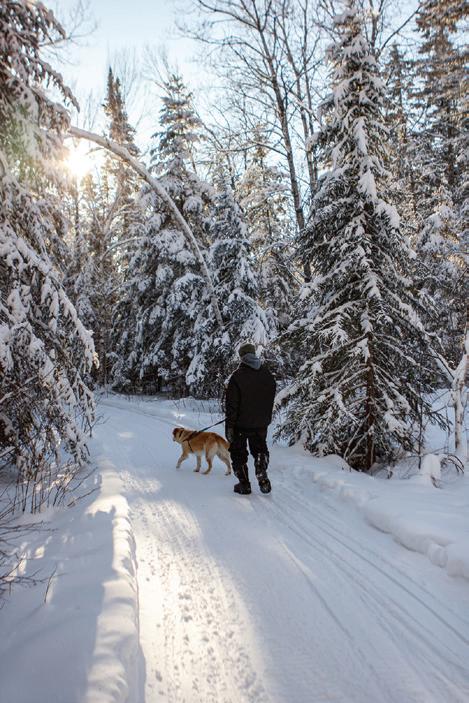
Our Winter Photo Contest Winner is Alena Collier of Ottermere Lake who writes:
The beauty of the snow covered trees and the quiet stillness of the trails created the perfect environment for an outdoor adventure with Donald (the pup).
Photo contest themes for 2025 will be:
Wonders of Wildlife, due January 25
Ice Fishing Adventures due March 21
Sunset Country due May 2
Loo with a View due July 25
Life at the Lake due September 19
Send your photos and a brief caption to communications@lowdsa.com. All photos must be over 1MB. The winners will be printed in Area News magazine as well as posted on our social media.

Something amazing happens when you become a member. That much has always been true of the Lake of the Woods District Stewardship Association (LOWDSA), but something exciting also happens when you keep your membership profile current.
LOWDSA continues to offer members the same great benefits we always have: Lake of the Woods Area News, information and resources about the lake and the area, events such as the annual Metal Waste Day and pine seedling sales (discounted for members), and much more. However, now more than ever, it is important to keep your membership profile up to date as we strive for continuous improvement of our communication and the way we deliver services to our membership and stewards of the Lake of the Woods area.
We are in the process of creating a new website with the help of Wake Marketing, to provide visitors with a fresh and contemporary experience. Along with the new website, also comes a new membership data base called MemberPress. All these changes are thrilling for LOWDSA, but necessitate the transfer of data from the current website and systems to the new ones. While we plan for a smooth transition in this next milestone we ask you, our members, to help facilitate and ease this change by keeping your membership profile up to date.
• Log-in to your membership profile on the LOWDSA website (lowdsa.com) or call us at 1-888-265-9784 to renew your membership or make any updates to your profile so that you continue to receive the benefits and services LOWDSA provides.
• If you have any questions, you can contact us via email at membership@lowdsa.com.
• You can also find us and keep up to date with news and what the team is doing on all social media platforms. We’d love to hear from you there.
As we continue on this exciting adventure of change, we are committed to our mission of engaging and educating for environmental sustainability in the Lake of the Woods region and continuing to provide the same services you have come to know and love from LOWDSA. As our members you can expect to receive Area News magazines five times a year, whether physically or digitally, as well as the eNews and articles posted to the LOWDSA website. We are proud to offer resources and easy access to just about anything you want to know about lake life. We collaborate with a wide range of organizations and resources so that we can be a conduit of information regarding topics that are pertinent to the area and our members.
Engaging with our community is of the utmost importance to us and our LakeSmart team exemplifies this with their dedication to providing environmental education to both children and adults. The team interacts with the community through their presence at the Matiowski Farmers’ Markets, classroom visits, dock visits, shorelines cleanups, and other events throughout the summer. This is a wonderful opportunity for you to see your Association in action and for us to hear from our membership.
Our members are what make everything we do possible, from IISD-ELA tours to dock visits to the Area News magazine. LOWDSA is proud to foster a community of like-minded people who all share the same passion for lake life and being stewards of the lake.
Our vision is unchanging: Lake of the Woods region remains one of the most beautiful places on earth for present and future generations to enjoy. You, our members, are the key to making that possible so we extend our heartfelt thanks for your continued support. an
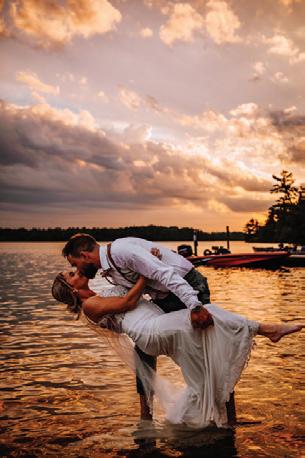

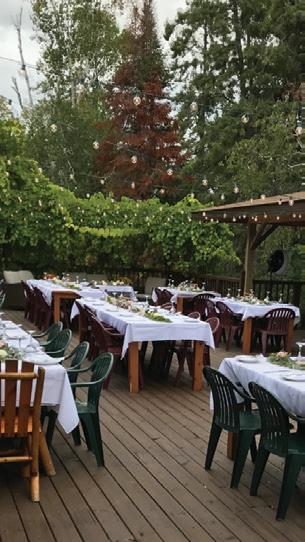
BY QUINN MILLER
One of the biggest and most successful programs LOWDSA runs is LakeSmart, an award-winning community outreach program unique to the Lake of the Woods area. The LakeSmart team is equipped with knowledge and resources on a broad range of topics including creating and maintaining shoreline buffer zones, preventing the spread of invasive species, safe boating, and more. It is delivered by a team of post-secondary students, each with an environmental focus, who will spend the summer sharing information on ways we can live and play green at the lake.

LakeSmart thrives on the energy and fresh perspectives of the students who deliver the program each summer. LOWDSA is happy to hire young individuals going through secondary education to be the faces of this program. The LakeSmart students represent LOWDSA well as their energy, their passion for learning, and their eagerness to interact with and educate the community portray the goals of the association.
Working with LOWDSA as part of LakeSmart is great way for students to get their feet wet in the environmental and education fields. With LakeSmart, students are given the opportunity to foster their passions and expand their knowledge in a field they are already studying. Our summer students have gone on to create careers for themselves in similar industries and in the Lake of the Woods area. We are thrilled to see past LakeSmart members working here in the community such as Lucas King
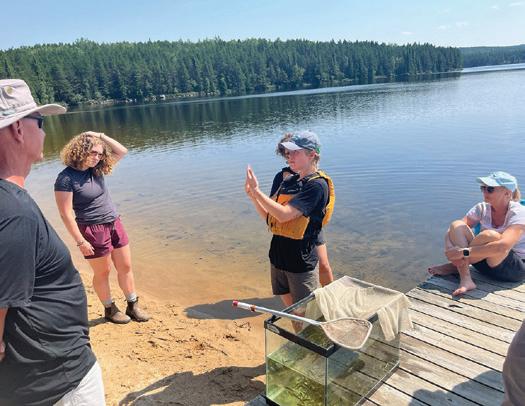
who now works for Grand Council Treaty #3, Abbigail Friesen who is working with IISD-ELA, and LOWDSA’s very own Executive Director Brie McCardle. Once the program coordinator for LOWDSA and now the Senior Education and Outreach Officer at ELA, Cassidy Mazur is always an informative highlight during the ELA tours.
The work our students do, interacting with the community, planning programming for both adults and kids, and providing knowledge to all members of the area, develops professionalism not only in the environmental and education industries but in general. Working with the various organizations LOWDSA collaborates with like Grand Council Treaty #3, Lake of the Woods Water Sustainability Foundation, Federation of Ontario Cottagers’ Associations, and IISD-ELA gives students the opportunity to network and create connections that can be carried into future careers. Additionally, this provides students in the midst of postsecondary education a chance to see the varied job prospects that can be achieved following completion of their schooling, some of which they might not otherwise have considered.
What truly makes working with LOWDSA in the LakeSmart team rewarding is the tangible and visible impact that is made, even after only working for a summer term.
Students who are interested in the Lake of the Woods area gain valuable experience, are offered the chance to make a difference, and have a lasting effect on the region and the community.
LOWDSA is proud to employ people at entry level positions and we are continuously impressed with their work and enthusiasm. an

This holiday season, consider giving a one-year LOWDSA membership to your adult children and grandchildren.
Order online, anytime!
Visit lowdsa.com to order gift memberships for anyone, at any time. Alternatively, email info@lowdsa.com or call 888-265-9784.

You can help reduce our carbon footprint while expanding your own beautiful patch of forest. Order your red pine seedlings this spring at lowdsa.com or email info@lowdsa.com.
Your loved ones new membership will give them access to all the member benefits you enjoy, but with their own direct connection to our resources—eNews, LakeSmart and Area News, to name a few!
Every edition of Area News is available to our members online, so you can catch up on what's happening whenever, wherever you are. Visit lowdsa.com to learn more!
We love to hear from our members and we want to share your story! Help us continue to make this magazine great— send us your comments, suggestions, pictures and story ideas.
Between August 23 and 25, federal Fisheries and provincial conservation officers stopped 451 vehicles at the Manitoba/Ontario border as part of a continued effort to battle the spread of zebra mussels. Among vehicles that were stopped were those with attached boats and other watercraft being driven across the provincial boundary. The officers were looking for signs of aquatic invasive species that might be attached to the watercraft.
Of the watercraft examined, 153 had not been cleaned, drained or dried and failed inspection. Fortunately, none had visible zebra mussels or zebra mussel DNA attached to them. We, at LOWDSA, are pleased to be a part of the “Clean, Drain, Dry” initiative.
Next summer, along with Grand Council Treaty #3, we will be even more visible and available to assist owners of watercraft in the “clean, drain, dry” process.
Remember, we are all on the same team when it comes to protecting our environment for present and future generations. an
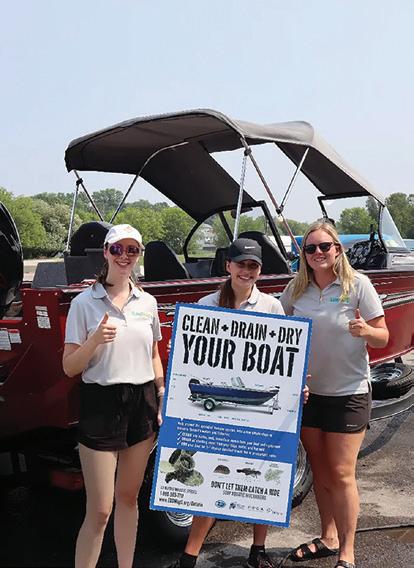

Renew online, or use this form to renew by mail or email.
Renew Your Membership
Your continued support of LOWDSA's programs and initiatives does make a difference.
Member Name: LOGIN EMAIL:
Alternate Email: Address:
Cottage Phone:
Mobile Phone:
YES, send my renewal notice by email
Use your smartphone camera app to scan this QR code and renew your LOWDSA membership online.

You can also contribute to our EISP Fund, purchase pine seedlings, and order gift memberships while you’re there!
Renew by phone: 807-468-8715 or 1-888-265-9784
Renew by email: membership@lowdsa.com
You can choose between a Full Membership (magazine mailed) or a Virtual Membership (digital magazine).
»
Kenora: May 18, 2024 10am - 1pm
Sioux Narrows: May 24, 2024 10am - 1pm
Help reduce our carbon footprint while expanding your own patch of forest. Please order your seedlings by May 5, 2024.
Clearwater Bay (Firehall) Storm Bay Rd. (Firehall) # of bundles (of 15) __________ at $15 each
A donation of $5 from each member would support an entire LakeSmart position and contribute to LOWDSA’s mobile boat wash station! Contributions to the EISP Fund can be made online any time at lowdsa.com/campaigns/eisp.
$250 $100 $50 $25
Other $_____________________________
To purchase multiple gift memberships, please attach each individual’s contact information to this contact form.
Full Membership, $80 Virtual Membership, $80
Recipient’s Name: _______________________________
Recipient’s Email: _______________________________
Recipient’s Address: ______________________________
Please send give card with message: TOTAL $
$
Options » Cheque payable to LOWDSA or call 1-888-265-9784 » Pay by credit card:
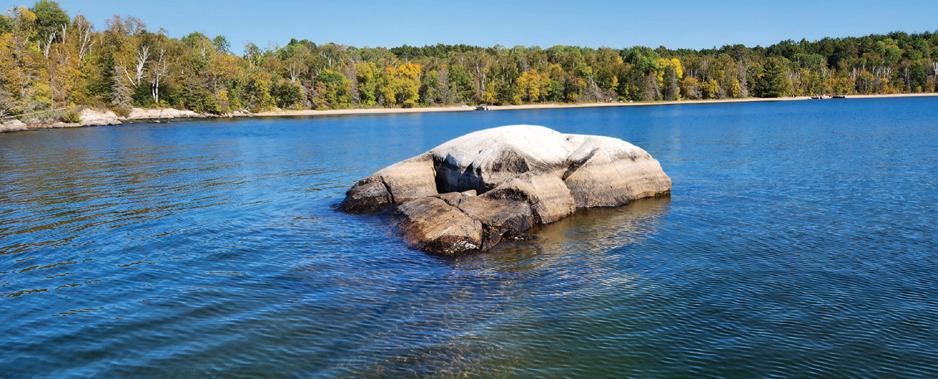
BY JEFF POLAKOFF, LOWDSA REPRESENTATIVE, LAKE OF THE WOODS CONTROL BOARD
This article was written following the October 2024 regulation meeting of the Control Board. The fall meeting is intended to determine a strategy and water level regulation prior to freeze up and in anticipation of the coming winter months. Once established the regulation is in place until March 31, 2025, however, can be adjusted based on changing conditions. During this meeting the Board also reviews the past spring and summer conditions across the Winnipeg River Basin including Lake of the Woods.
At writing, the level of Lake of the Woods was approximately 322.70 m (1058.6 ft) or just below normal for the time of year. This compares to the level on nautical charts of 322.8 m (1059.0 ft). The lower fall levels were consistent across the basin due to lowerthan-normal precipitation during October, much of September and part of August. During the month of July however the Lake of the Woods received high inflow rates from Rainy and Namakan lakes because of significant rainfall in southern parts of the basin. In July, the lake level rose to approximately 323.33m (1060.8 ft). Beginning in mid-July, inflows stabilized, and the lake level began to decline. In August, inflows returned to normal, which assisted in achieving the regulation strategy target for the period.
Looking forward to winter, the United States National Oceanic and Atmospheric Administration (NOAA) has issued a La Niña watch. Both NOAA and Environment and Climate Change Canada have indicated that La Niña conditions typically result in colder and potentially wetter conditions throughout Canada including the Winnipeg River basin. Conditions will depend on the severity of La Niña, which will become clearer as we approach winter and the new year. As of this writing, the low level of precipitation and inflow conditions were consistent with both
regulation targets and preferred conditions in preparation for freeze up.
In setting the regulation for the upcoming months, Control Board priorities include adjusting the lake level and outflows to achieve a balance between upstream and downstream interests, regulating the Lake outflow to assist in providing satisfactory freeze-up conditions on both Lake of the Woods and the Winnipeg River. This is to avoid ice problems and high freeze-up levels and minimize flow and level changes to avoid large shifts in lake and river levels that could affect ice cover and shorelines. In addition, based on advice and input from resource agencies and others, the strategy calls for protecting the eggs of fall spawning fish and limiting drawdown on the lake to the extent possible to provide good spring spawning conditions.
An end of winter target range was set at approximately 322.4 m (1057.7 ft) to 322.5 m (1058.0 ft) based on conditions, forecasts and past practice. The target places a preference on the lower end of the range. As we prepare for freeze up and after the formation of ice, please be cautious and aware of local conditions.
Information on the work of the Control Board is available on its website. This includes the status and background of water level management, historical data and the balancing of diverse interests within the basin. The site is currently being redeveloped to update and modernize its content. We will keep LOWDSA members aware of progress related to the redevelopment; however in the meantime please visit the web site at lwcb.ca for up-to-date information. an
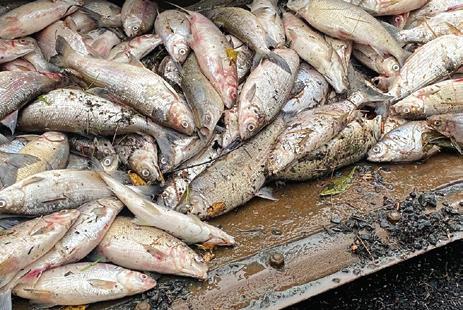
BY GARTH COLLIER
I made some enquiries about the fish die off I’d heard about at Bigstone Bay and a few other spots. Some of the experts indicate that the main cause to be a combination of low oxygen and highwater temperatures, which are common causes of fish mortality.
With the warm weather this fall, algae blooms are thriving and reducing the oxygen in the water forcing the fish to move up in the water column to get enough dissolved oxygen. Unfortunately, cisco and whitefish also require cool water temperatures, so by moving up to get more oxygen, they are entering temperatures they can’t survive in. These species have a small survivable area in the water column and if any sudden changes happen, like when we get severe weather events, they end up in an area of the water column with either not enough oxygen or too high-water temperatures.
Although the die-off could be attributed to the above factors, there could also be other reasons, thus making it a good idea to always report.
Keep this web link handy if and when you need to report fish die off: cwhc.wildlifesubmissions.org/#/finfish-en
Hoping Mother Nature cooperates for the upcoming sledding season
Most die-hard sledders know that the Sunset Trail Riders Snowmobile Club had a very different season in 2023, as Mother Nature was being difficult with the snow. Despite the conditions, dedicated volunteers still put in approximately 4000+ lake stakes and signs. Thanks to the donated side-by-side from FFun Motorsports Kenora, the club’s signage co-ordinator and volunteers were able to inspect, upgrade and repair signage throughout the trail system.
There are a few updates to note for the 2024 season. The trail through Kenora on Highway 17 has been changed back to the mall parking lot, but with upgrades. Every snowmobiling season, black pylons will clearly mark the trail along 17, to avoid riding through the actual mall parking lot.
In conjunction with Northern Ontario Heritage Fund Corporation’s approved project of a new lightweight Kubota RTV side-by-side and snow drag, the club hopes to have an earlier start to the grooming season. Fingers crossed, this in turn means an earlier snowmobile/recreational season for all to enjoy.
The club is always looking for volunteers and has a specific need for someone to help with communications. To enquire and for updates throughout the season go to sunsettrailriders.ca.
For specific trail availability details, always consult the OFSC Interactive Trail Guide (ITG), which will be updated at ofsc.on.ca soon.
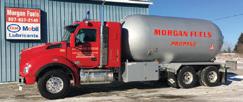




Lake of the Woods International Sailing Association (LOWISA) held its annual LOWISA Regatta from August 3 to 10, 2024. LOWISA 58 explored the northwest corner of Lake of the Woods, showcasing the magic of a classic LOWISA Regatta experience. The regatta is a week-long sailing adventure where boats race each day from one anchorage to the next, using designated islands as course markers. In the evenings, boats raft to one another with many sleeping aboard and others paddling to camp on shore.
BY LAKE OF THE WOODS INTERNATIONAL SAILING ASSOCIATION
We had it all this year: hot, cold, highs, lows, wind and rain. Throughout it all, the Spirit of LOWISA was high. The Spirit of LOWISA is an ethos we celebrate in our small (but mighty) sailing community, which highlights a certain je ne sais quoi that has kept our event alive and strong for over 58 years.
As usual, the regatta started on Saturday morning of the August long-weekend with Participant Check-in at Northern Harbour. Our fleet reached a total of 51 boats (150+ sailors), including 19 competing in the Pursuit Race, 17 in the Traditional Start Divisions, and 15 boats in the support/cruising fleet.
The L58 Skippers' Meeting was held over VHF radio on Saturday evening at the pre-LOWISA anchorage in Lily Pad Bay. We enjoyed watching the action over the August Long weekend, including surprise fireworks and northern lights shows late into the night.
Sunday Race 1 took us round and round Safety Bay and the Yacht Club stretch and featured a third start division with three club scows competing for the Nautical Coffee Cup. We celebrated
the end of Race 1 with the first ever Nautical Coffee Float Fest in Quiet Bay, featuring a live band on the rooftop.
Monday Race 2 took us past S-Island to Nebraska Avenue where we gathered for the Mallin Contracting Costume Party hosted at Five Point Island. The costume party has become a highlight over the past couple years as participants are eager to gather with the fleet on shore for the first time of the year.
After motoring through a calm Corkscrew Channel Tuesday morning, Race 3 took the fleet through Clearwater Bay before ending the day for dinner at Ash Rapids Lodge. The fleet anchored in front of the lodge and headed in for an amazing shore dinner of pulled pork sandwiches.
Layover Race Day kicked off on Wednesday morning with breakfast and a racing seminar in the lodge led by North Sails pro Alex Levkovskiy. In the afternoon, 11 boats competed in shortcourse buoy races, presented by North Sails. The day featured the “biggest” start line of LOWISA 58 and a dedicated Women at Title
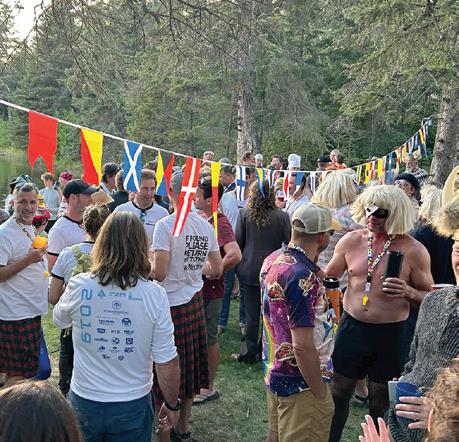
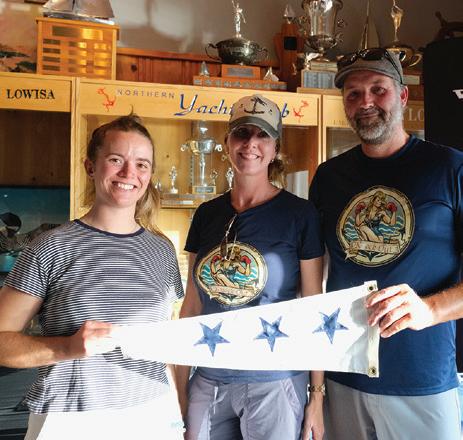
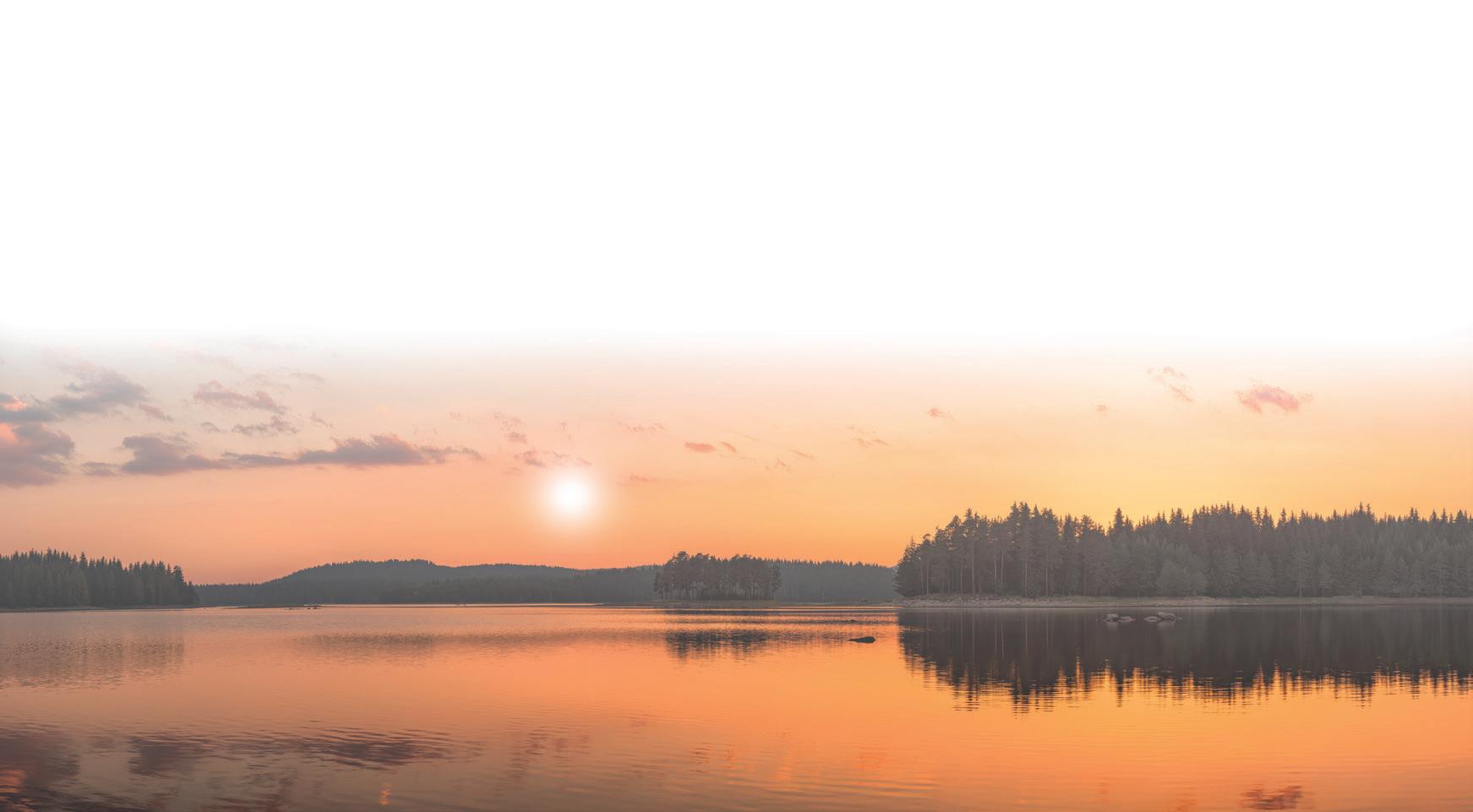
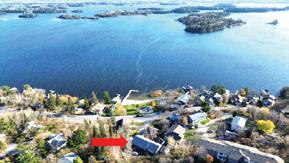
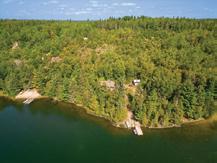
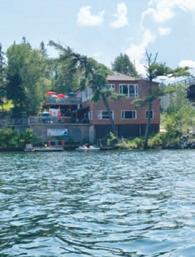
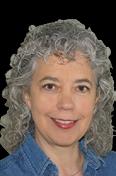
by Leanne Fournier
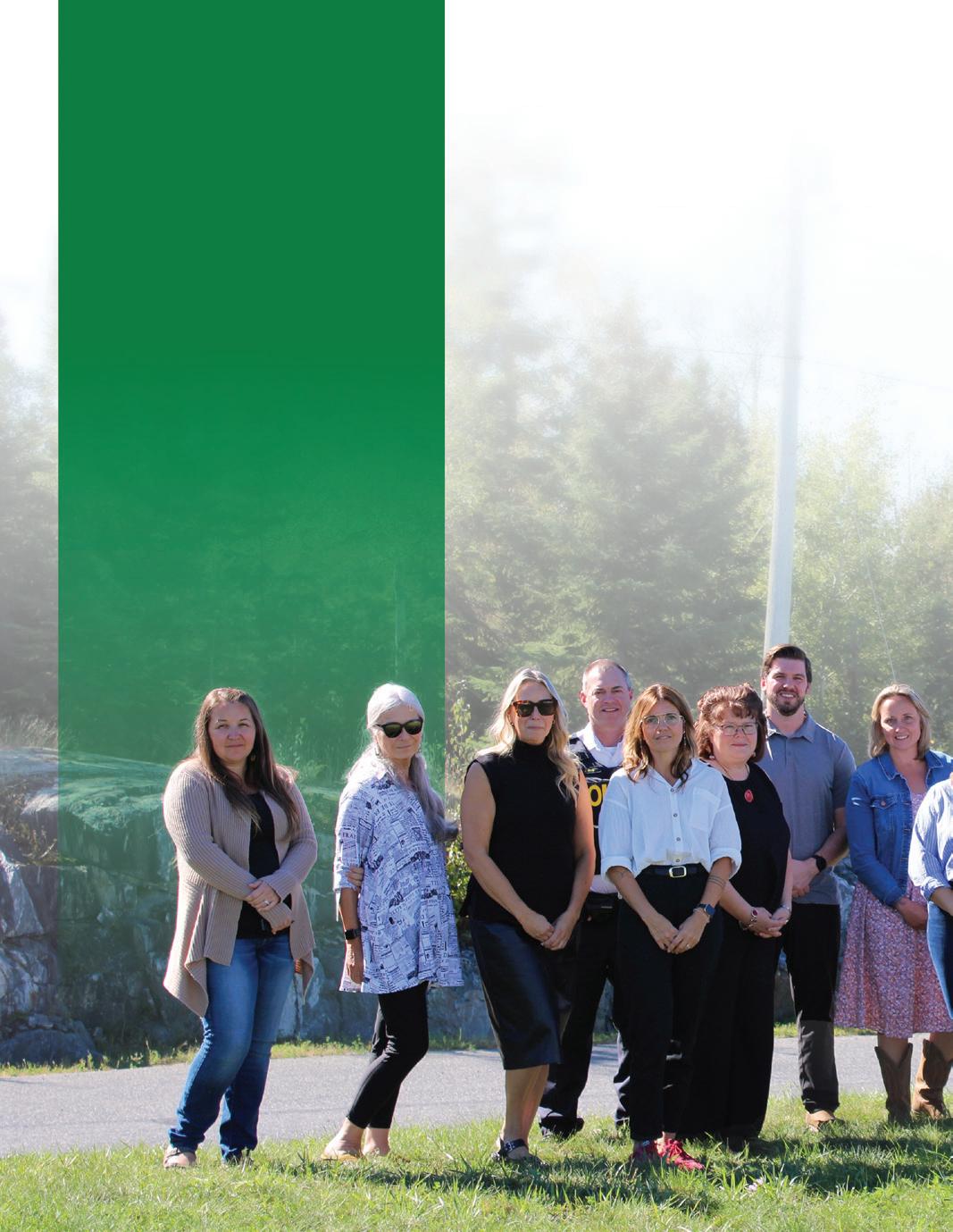
The members of the CPCWB Advisory Committee pose for a group photo: L to R: Jill Hager, Anita Cameron, Shannon Bailey, Jim Neild, Cynthia MacDougall, Denise Forsyth (vice-chair), Jared Olsen, Darcia Curtis (chair), Haley Pentek, Taras Manzie, Jodelle Maksymchuk, Grant Cowles, Regan Dearborn, Jeff Duggan, Logan Haney, Councillor Bob Bernie. Missing: Councillor Barb Manson
Some galvanizing incidents over the past few years have heightened the City of Kenora’s commitment to address concerns about safety in its downtown and surrounding areas. Additionally, the City is provincially mandated to file an annual Community Safety and WellBeing Plan with the Solicitor General.
The first step the City undertook was hiring a full-time Community Safety and Well-Being Coordinator, Eric Shih. Next was bringing on board Christiane Sadeler of Better Solutions, who has decades of experience facilitating community safety. Her role would be to work with various stakeholder groups to develop the Community Safety and Well-Being Plan.
“Historically, there’s always a limited number of people at the table that are working hard to represent all of the community’s priorities and needs,” said Shih, “Now, under Christiane’s guidance and leadership, we have a robust, evidence-driven process to engage people from all different sectors—public service, law enforcement, business, and the broader community.”
The City’s Chief Administrator, Kyle Attanasio, looks forward to the results of what he describes as an intensive stakeholder-driven engagement process.
“Aspiration is important, but we need to be focused on measurable action-oriented activities that will be implemented over a specific amount of time. We are trying to focus on concrete priorities.”
Sadeler is impressed with the level of support she’s received and the energy she sees coming from city leaders, community members and the Crime Prevention and Community Well-Being (CPCWB) Advisory Committee, which was established earlier this year. The Committee is comprised of representatives from the City, local service agencies, law enforcement, and individual citizens with a variety of areas of expertise and experiences.
CPCWB Advisory Committee Chair, Darcia Curtis, describes how crossrepresentation on the Committee is essential. “It’s important to have insights from different sectors with different perspectives so we can consider the
varying needs in the community. We’re talking about well-being and making sure all voices are being heard and not just those that are the loudest.”
In addition to guiding activities of the CPCWB Advisory Committee, Sadeler has been conducting consultations with a broad spectrum of community stakeholders as well as reviewing data from many agencies and through public channels such as Census Canada. She also coordinated a survey to assess the community’s perceptions of safety as well as to identify how people want to be involved in solutions.
The survey had 1,013 responses. “This is the highest rate I’ve ever seen and very high for a community the size of Kenora,” she said. “This tells me this is close to people’s hearts, that people want change, change in what they are experiencing downtown, and change in what has led to the challenges the community is experiencing.”
While the data is still being analyzed a few key findings have “risen to the top” as Sadeler describes:
• When asked where residents felt safe and unsafe during the day and night, respondents provided the following feedback about

downtown: during the day 33 per cent of people felt safe, while at night feeling of safety drops to 14 per cent. 47 per cent of respondents said they feel a strong sense of belonging in Kenora, while 48 per cent said they feel a weak sense of belonging.
• A majority of the respondents also said that they have not been a victim of crime within the past two years.
• Indigenous residents are more likely to feel unwelcome, question what’s helpful in crime prevention, and have a less trustful relationship with police.
One promising finding stands out for Sadeler. When asked if they would be willing to work with others on improving the living conditions in their neighbourhood, a whopping 87 per cent of people answered yes.
“This tells us that people are ready to roll up their sleeves,” she said. “The question now for the CPCWB Advisory Committee is determining how we mobilize that 87 per cent. This Plan is not just going to be implemented by the City and police and social services—it’s intended to be a plan for every citizen.”
“The fact that a high number of respondents are feeling unsafe in downtown is not news to us, but it is good to get the confirmation,” said Sadeler.
While many citizens, when asked about crime prevention, talk about challenges in the downtown, a significant number of them also voiced fears of domestic violence and sexual assault. “Many crimes happen behind closed doors and the CPCWB Advisory Committee is very much aware of that,” said Sadeler. Curtis adds that this finding underlines the importance of looking beyond the perception that concerns about safety only lies in the realm of addictions that are evident in the downtown core. “That’s important and significant, but pieces around prevention and what contributes to everyone’s well-being is important too. The intention is to make sure our Plan doesn’t just sit in the mental health, addiction, and social services world. It needs to be broader than that.”
The CPCWB Advisory Committee is now moving into identifying priorities, after which the final plan will be presented to City Council.
“This will span everything from what the municipality can do to actions that can be undertaken by the service organizations, the community, and individual citizens,” said Sadeler. “We’ll be looking at how to make the priorities happen—what actions are needed to accomplish goals and objectives. We’ll be attaching evaluations so programs can be adjusted as we go along. This is not to measure how a program or initiative succeeded or failed, but to set up the actions for success in the first place.”
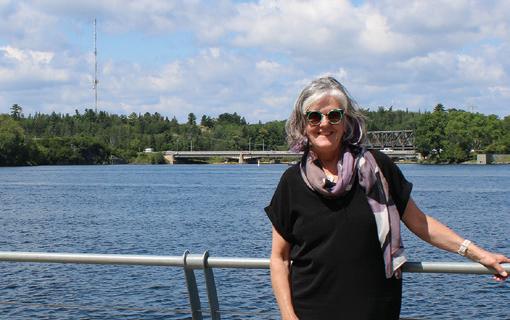
Curtis adds, “The CPCWB Advisory Committee is a group of people who are all very intentional about doing this differently, thoughtfully, by being well-informed and having engagement from others. There’s a strong commitment that this won’t be a plan that goes nowhere.”
She hopes the data will also help the community look toward the future. “What is the research showing for what needs to happen with children and youth to prevent crime going forward?”
The Plan will consider the unique composition of Kenora’s population, which includes up to 10 times as many Indigenous people relative to its size compared to other municipalities in Ontario. “You can’t develop a plan of this nature without paying attention to that,” Sadeler said. “It brings up all sorts of conversations and provides a unique opportunity for Kenora to model the way for meaningful communication within this diverse population.”
Curtis agrees. “The proximity to residential schools is an important piece we need to consider and ensure engagement of the Indigenous population and that they feel part of this plan.”
Three Indigenous Sharing Circles were cofacilitated by Jazlyn O’Bonsawin, a researcher from the Canadian Centre for Safer Communities in collaboration with the University of Waterloo and Mary Alice Smith from Kenora. They were assisted by Anita Cameron, a member of the CPCWB Advisory Committee with expertise and lived experience in Indigenous health and community relations. Prior to her retirement, Cameron served as Executive Director for Waasegiizhig Nanaandawe’iyewigamig, which offers comprehensive primary health care services reflecting both traditional and contemporary approaches for Indigenous people in Kenora and surrounding First Nations.
She has been pleased with Sadeler’s approach thus far. “There’s lots of expertise and she is picking
up on the gaps and that Indigenous people have different perceptions of safety.”
This isn’t a surprise to Cameron, who, in addition to working with Indigenous community members, has also lived here for 30-plus years and raised her children here. She has first-hand experience of racism directed at her immediate family as well as relatives living on Kenora’s streets.
She helped connect O’Bonsawin with a young mother’s group through Ne-Chee Friendship Centre, a Grandmother’s Circle, and representatives from the Kenora Métis Council.
She comments that it was interesting to hear the commonalities in themes between older and younger women.
“Both groups shared similar perspectives in terms of defining safety and were far more concerned about the safety of their family members than themselves.”
The younger women, however, were more outspoken about concerns related to drugs and needles. “The mama bear instinct is strong when you have cubs to protect,” she observed. “While the older women share that worry, they were equally concerned with the underlying roots of those problems and addressing them through healing rather than more judgemental approaches.”
These consultations highlight for her the need for a plan that’s both meaningful and manageable.
“Kenora’s population is diverse and regional, so this plan needs to include something for everyone. A great start would be promoting a better understanding of the real history of the area, and the tremendous contributions Indigenous people have made to that shared history and what stands
here today. So much information has been left out of the narratives we hear.”
“My dream is that this plan isn’t an end of itself, that it becomes a mobilizing tool for Kenora to roll up its sleeves and for people to work together across any divides to do the best they can for everyone, but also specifically for those experiencing disadvantages and heightened fears,” said Sadeler. “Ultimately, that it’s a catalyst for change for Kenora.”
This, she hopes, will help create some momentum and possibly address the concerns of those who don’t believe there will ever be positive change.
“Life is about change, and change is inevitable. You can be part of the change, or you can push back. The new or next Kenora may be even greater than the one you remember, an amazing community socially and environmentally.
Kenora is a jewel of a place that wants to be known for that and its tourism, but also as a community that rallies together and doesn’t give up.”
She concludes, “The problems Kenora is facing weren’t created overnight, so they can’t be fixed overnight. We need to monitor the progress and stay dedicated to it. It’s easy to throw up our hands and say nothing will ever change.
But the river flows very slow. When we can focus on what we can all do—every one of us—we can help that river flow faster.”
You can read more about the Community Safety and Well-Being Plan at kenora.ca/en/your-government/ community-safety-and-well-being-plan.aspx. The page includes links to the CPCWB Advisory Committee, minutes, and website page. an
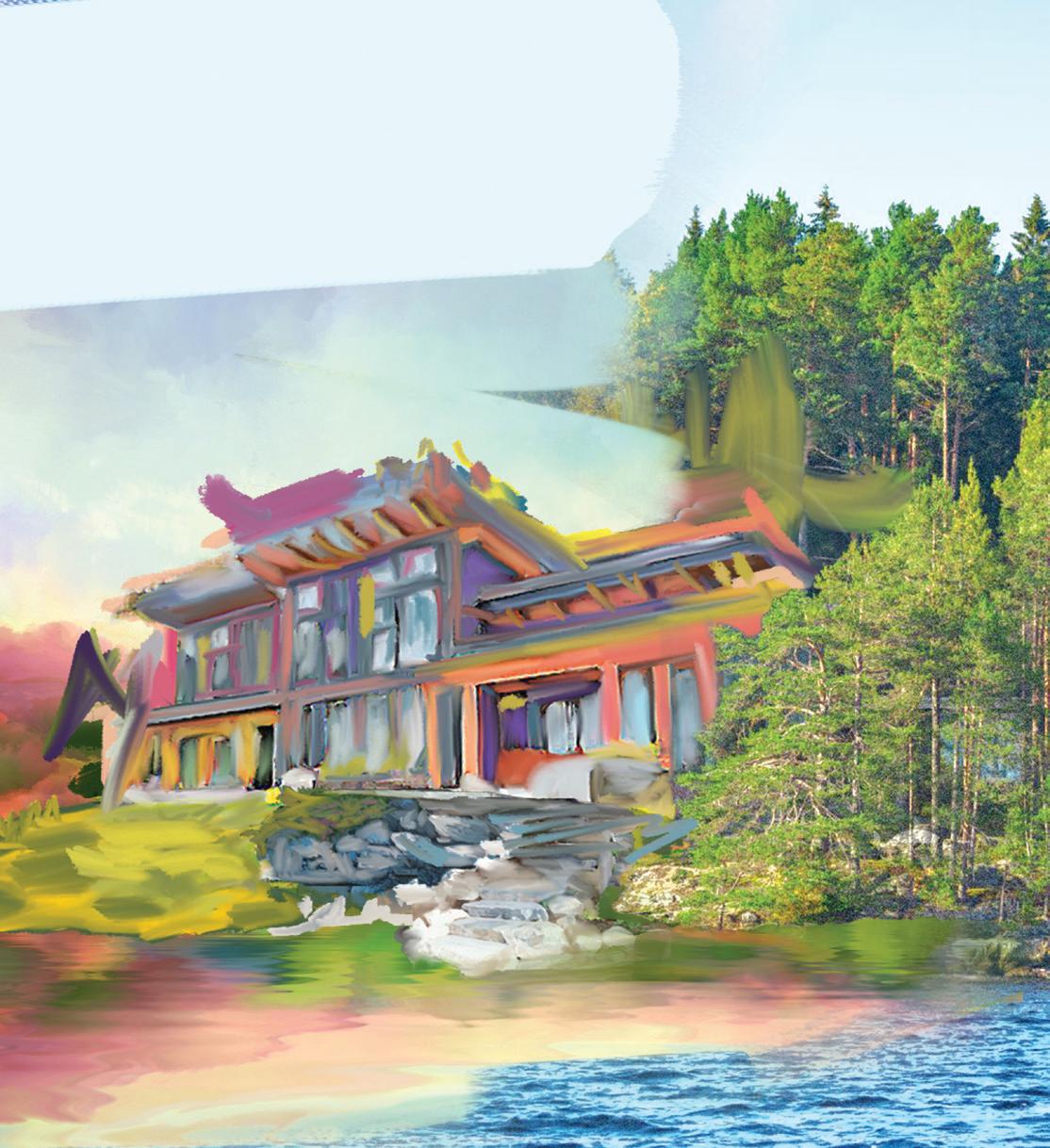
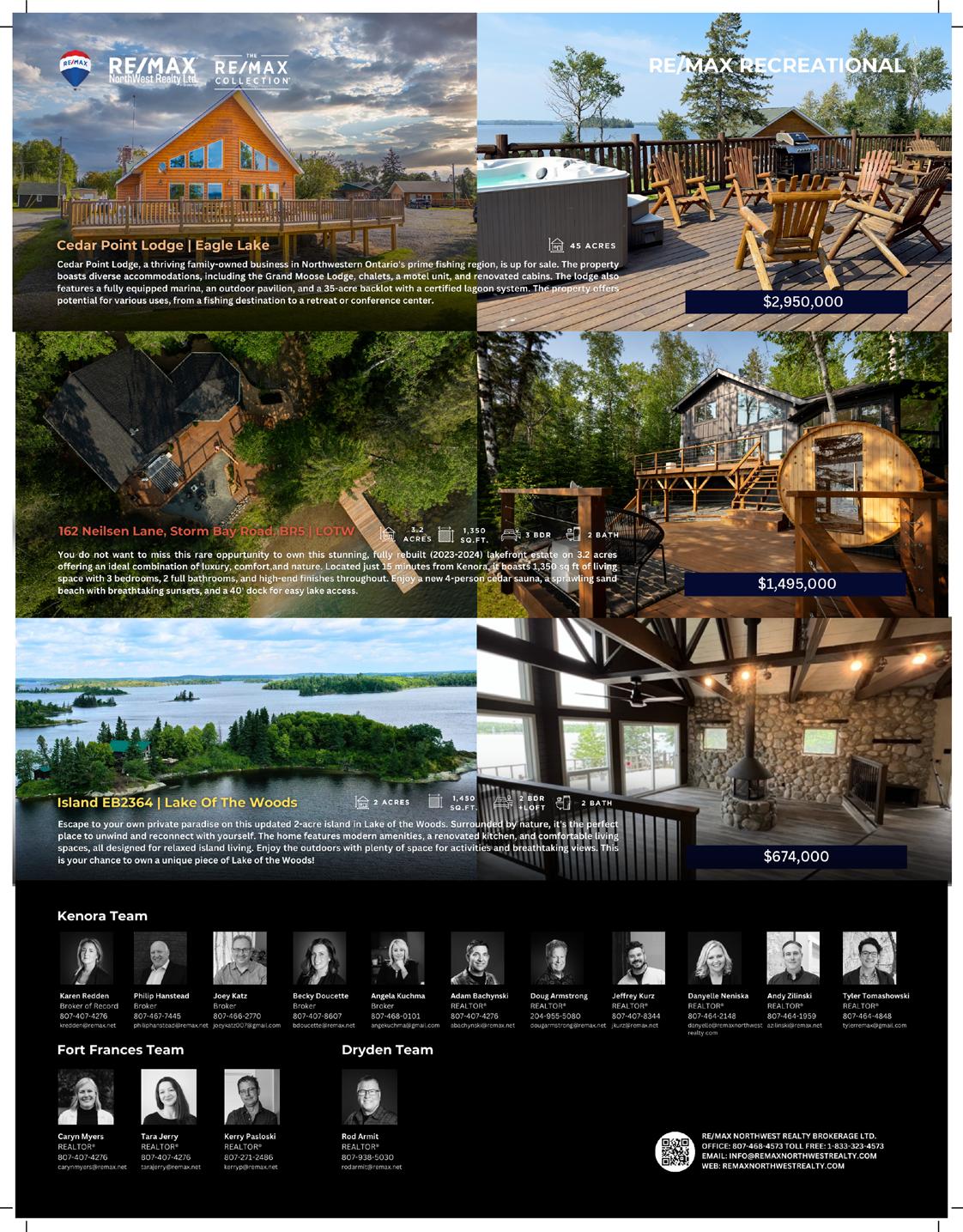

BY JEFF GUSTAFSON
Throughout my fishing travels and interviews that I do, I’m often asked “where is your favourite lake?” For me, the answer is simple. It’s Lake of the Woods, where I was born and raised. While I enjoy and make my living as a competitive bass angler, I enjoy multi-species fishing. In my opinion, Lake of the Woods is the best multi-species lake in the world.
At the top of the list of different species to catch in Lake of the Woods is walleye, which most people visit the lake to chase. Walleye fishing is excellent throughout the winter on the big lake, from the time when can get out on the ice in December until the end of the season or April 15, when the season closes for a month. Here is how I like to put a plan together to catch plenty of walleye throughout the winter. These general rules will apply to area lakes surrounding Lake of the Woods as well.
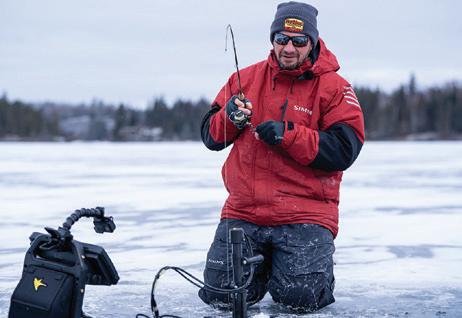
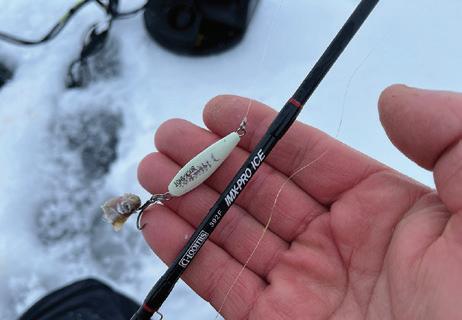
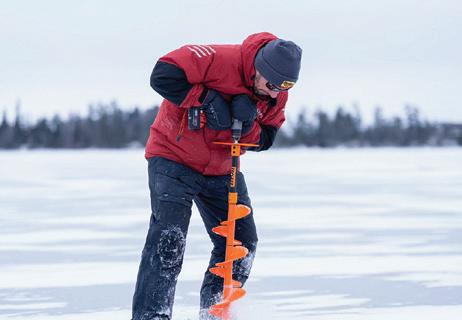
Before I started fishing professionally in the U.S. in 2012, I used to spend 50 to 60 days on the ice, guiding on Lake of the Woods, mostly for walleye. We would get out there as soon as the ice was safe for travel, typically around Christmas time and fish until it wasn’t safe anymore, usually sometime in early April. These days I still get out there every chance I get when I’m home.
The best fishing happens early in the season when the fish haven’t been pressured for a couple of months and late in the season when the snow melts and walleye start moving shallower. They can be caught throughout the winter; it just gets to be a little more of a project through the mid-part of the season when we have to battle snow and cold.
The biggest advancement to aid anglers on Lake of the Woods in recent years has been the release of highly detailed mapping. Humminbird has the best mapping of the lake, available on their Ontario VX card. Other waterbodies across the region are also included on this map card. If you just want to use your phone, the Humminbird One-BoatNetwork app and the Navionics app both have excellent mapping available as well. I mount a small Humminbird unit on my snowmobile that I use, but using a phone with one of these apps works fine as well.
This detailed mapping has every bump, hump and point on the lake drawn out so it makes it really easy to pull up on a spot and know where to drill holes. On most days, you want to focus your efforts in 32 to 40 feet of water. My favourite spots are points and humps that have a nice flat on them in that preferred depth. These flats allow a group of walleye to call a spot home. While the best spots are close to deep water, I don’t like fishing the structure that is really steep and has sharp drop-offs. These spots just never seem to be as good.
Later in the season, once we get into March and the snow starts to melt and allow more sunlight to penetrate the ice, walleye start to migrate towards areas where they will spawn shortly after the ice goes out. These spawning areas are often shallow bays, where creeks or rivers flow in. Some of my favourite spots to fish are at the mouth of these shallow bays, in the last bit of deeper water, usually in 15 to 25 feet Sometimes they can be found on mud flats, but if there is a point or hump in an area like this, they are magnets for late season walleye.

Bottom:
Walleye are usually easy to get through the ice. The bigger challenge is making sure you’re putting your bait in front of some fish. For the past 20plus years I have seldom used anything but a 3/8-ounce Northland BuckShot Rattle Spoon, tipped with a minnow head. It works great everywhere I’ve ever ice fished for walleye.
In open water, I very rarely use any meat (live bait), instead just using plastic tipped jigs. In the winter, a little bit of meat on your hook is going to help you get way more bites. The reason I just use a minnow head on the spoon is because if you try to put a whole minnow on there, the package becomes too big and you’ll lose some of the nice fluttering action on the spoon.
The traditional jig and minnow will always produce as well. I enjoy using a spoon because I like to watch it on a sonar screen while I’m jigging and then figure out how to trick the walleye into biting it, based on my movements. Typically, I’ll jig in short, one-to-two-foot hops to attract walleyes to come in for a closer look. When I see walleye show up on my sonar, whether it is a traditional flasher or the newer live sonar, I’ll start shaking the spoon more and slowly raise it in the water column to keep it above the fish. Some days they want you to jig more aggressively and some days they just want the bait dead sticked. Just let the fish tell you what they want every day.
If I fish a new spot, I have a 20 to 30-minute rule. I’ll give a hole a few minutes and if I don’t see or catch a fish, I move to a new one. Fortunately, most of the humps and points out there will have a school of walleye on them, but some will not so if you’re not catching anything, don’t be afraid to bust a move. Ice fishing is not about going out and sitting on a bucket and hoping you get a bite. If you move around a little bit, you’ll usually contact some walleye and bring dinner home.
Walleye fishing on Lake of the Woods is as good as ever and the new size restrictions that were put into place in 2024 are designed to keep it that way by protecting the best spawning fish. It’s been a little bit annoying because so many walleye out there are just over the size limit and have to be released but at the end of the day, we have some great fishing out there.
Happy ice fishing! an
Starting in 2024, the walleye regulations changed on Lake of the Woods and while most anglers are probably aware of these changes, here is a reminder. While fishing on Lake of the Woods, anglers cannot keep any walleye between 43 cm and 70 cm (16.9” – 27.6”). The limit remains four fish (walleye or sauger or any combination) for Canadian residents. Non-Canadian residents can only keep two walleye per day on Lake of the Woods. Across most of the Sunset Country Region, the daily limit remains four walleye, with only one fish allowed over 46 cm (18”).

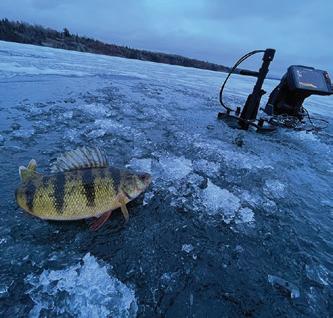
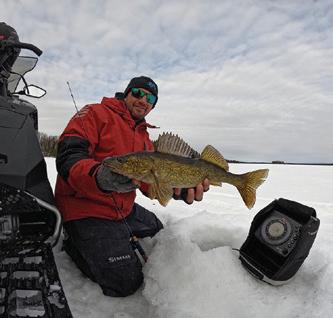
and
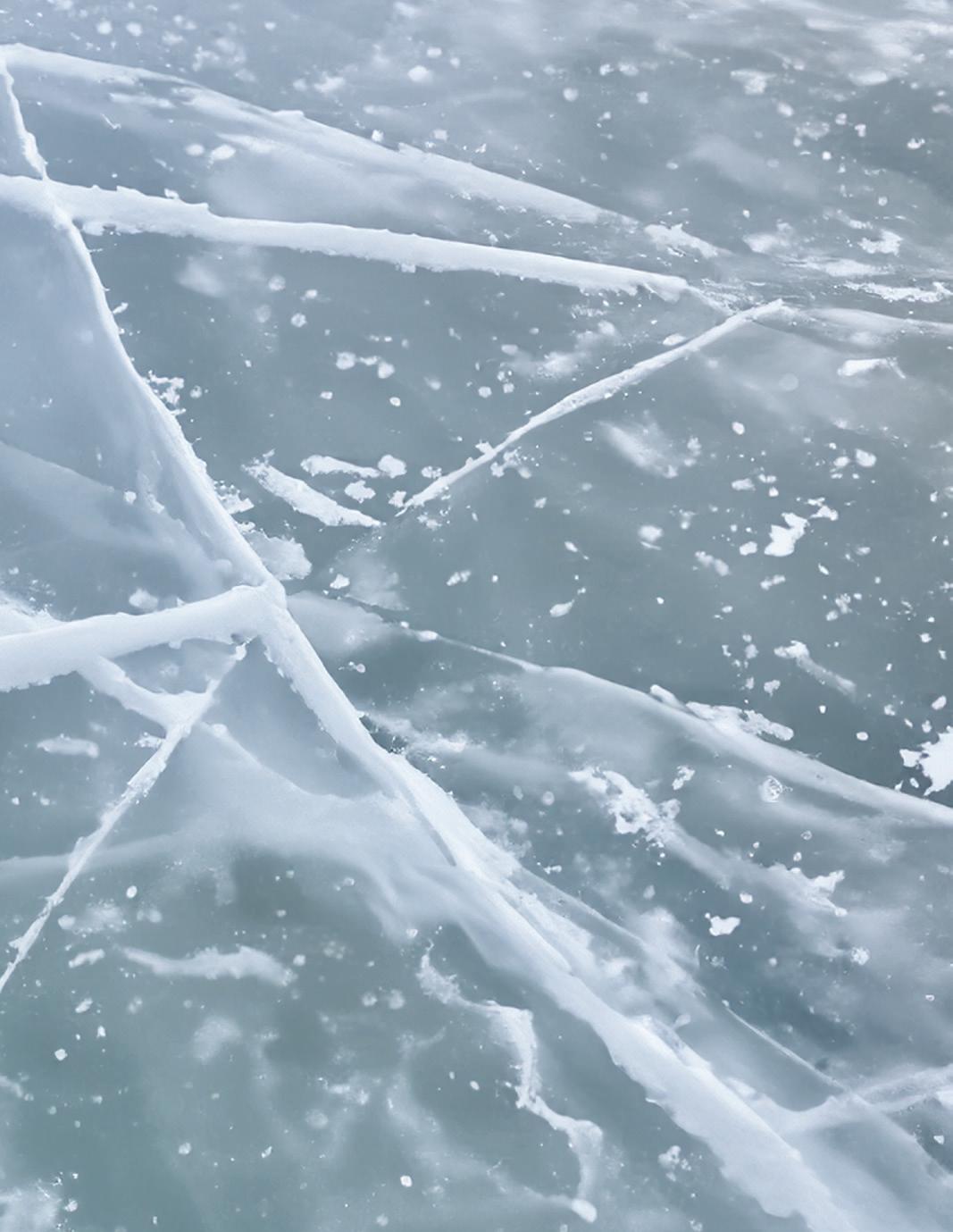
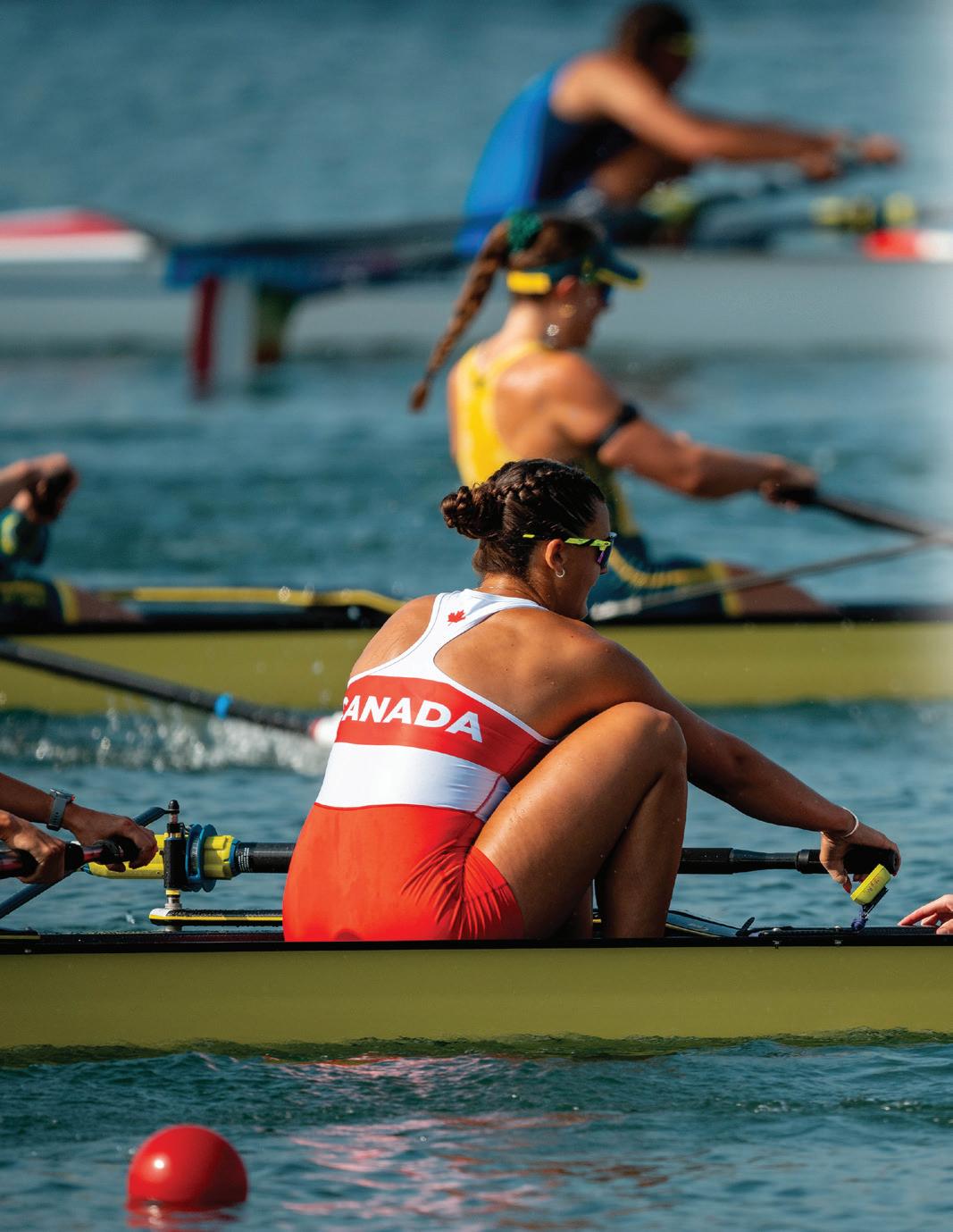
BY LEANNE FOURNIER
When Kenora-born and trained Olympian Abby Dent was asked what she remembers most about the final metres of the race that brought the Canadian team to a silver medal finish at the 2024 Olympics in Paris, she recalls, “It hurt!”
She adds, “But once it hurts that much, it can’t hurt much more. You might as well make the hurt worth it!” She also remembers the coxswain giving the team a heads up they were sprinting at 600 metres, shouting, “what colour of a medal do you want?” In Abby’s mind this meant ‘buckle up’. “We were shifting to a whole new level.”
The usual sprint call is around 300 metres, so 600 metres “was a long way to sprint,” said Abby. “It was pedal to the medal.” She shares that as the team rowed across the finish line, they weren’t sure how they had placed as it was so close.
“Then we saw Romania came in first and we got silver. I had this plan to do some big celebration, but I just started crying instead, which was the true emotion of the moment.”
Abby’s dad, Carlton Dent, shares that emotions were also high for him and Abby’s mom, Leanne, who were seated about 150 metres from the finish. “Just knowing everything she’s gone through, all the sacrifices she made to get there. We’ve watched her at many races and she’s always cheering and so excited, so this was quite a different reaction; we knew it was something special.”
While there was a lot of help along the way, Carlton credits Abby for the successes she’s achieved. “She kind of did it herself. She willingly woke up at 5 a.m. on summer holidays. We never had to convince her she had to go.”
Carlton talks about Abby’s deep humility but also her resilience and commitment, always having her eyes on the end goal. “She’s had hard days, mentally challenging times, but she knew this is what she wanted.”
Early on, Abby, her parents, and coaches identified how important all aspects of her physical and mental health were going to be. “Before the Canada Summer Games in 2017, I started working with a Sport Psychologist and that was the biggest factor that drove me to the Olympics,” she said. “That winter around Christmas time, I began writing down my goals. I always had the dream of going to the Olympics, maybe for hockey or volleyball, but once I rationalized it, it seemed attainable for rowing, so I drew up a timeline of what that would look like, and the hurdles I would have to overcome.”
Highlights that Abby identifies in her journey to the Olympics include making the single boat for the Canadian Junior Championships in 2017. “It was the first moment I realized I could move up the ladder onto the senior team.” Getting a rowing scholarship for the University of Michigan was another stepping stone, providing a bigger squad and more dedicated training.
Always goal-oriented, Abby was determined to see how many ERG* records she could break before leaving for the Olympics. She broke 10 of them and set one new world record for the 2,000-meter ERG on slides on test.

*ERG scores essentially represent your performance level and can be a valuable tool for both athletes and coaches. The primary metric used in ERG scores is the time it takes you to row a set distance, typically 2,000 metres, on a rowing machine.

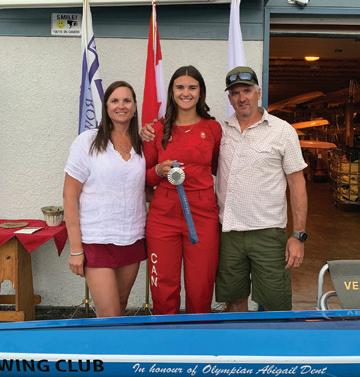
For Abby, the role of the Kenora Rowing Club can’t be overstated. “They probably played the biggest role of all,’ she said. “Without Tim and the whole club reaching out, there’s no way I would have found the sport of rowing.”
Carlton shares these sentiments. “Just the fact they were there; if we didn’t have a rowing club here in Kenora, this never would have happened.” He gives special mention to Tim Wehner – A club volunteer who went to the local high schools to introduce the sport. “While Abby also trained out of Winnipeg, we owe so much to Kenora and the volunteers that take time out of their lives to get kids interested in the sport.”
He adds, “Hopefully the club flourishes and there’s another generation of rowers that comes through.”
Abby also credits Ashleigh Milani, her first coach. “Seeing who I was and believing in me from day one, she was one of my biggest supporters along the journey and has always been there for me no matter what.”
Ashleigh admits she was too nervous to even watch the Olympic race live. “I watched it on the news afterwards,” she laughs. “I was filled with immense pride and joy as any coach is for their former athletes.”
She recalls how Abby’s mom approached her early on asking if the sport was “legit” and if she thought Abby had a future in it. “I responded that Abby had the strength and size and that it comes down to mental stamina. There’s those gruelling early mornings, training your butt off and you’ll do that for a long time and maybe get an opportunity to showcase what you have done.” Ashleigh applauds Abby and her parents for seeing the importance of having the mental fortitude to see it through.
“During a race when your body is screaming at you to stop you have to push on. Abby’s a very determined young woman and I’m so proud of her.”
Abby was also coached by Janine Stephens, of the Manitoba Rowing Association, who won a silver medal for rowing in the 2012
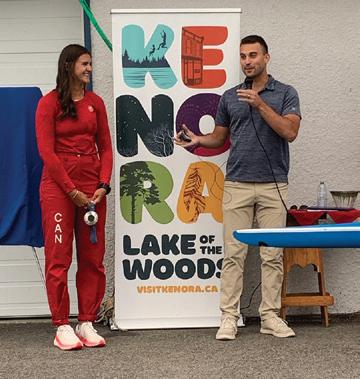
Olympic Games in London. Janine agrees with Ashleigh about the power of Abby’s strength and dedication.
“Lots of high school athletes don’t make that commitment or find lots of excuses,” she said. “Abby had a belief in what was possible and worked towards that right from the start. The commitment required is tremendous. Your work is never done in rowing. As you get better, your expectations change, and there’s always something more to work towards.”
Both Stephens and Milani, along with members of the Kenora Rowing Club, were thrilled that Abby was in the stroke seat for the Olympic competition. This is considered the most important position in the boat, because the stroke seat rower sets the stroke rate and rhythm for the rest of the crew to follow.
Abby was first put into the seat at the World Rowing Cup in April 2024, when the stroke rower on the Canadian team became ill. The team won Gold.
“That was incredible in and of itself,” said Janine. “We knew they were on the right track for training and performance.”
Peter Harland, President of Kenora Rowing Club, agrees. “It was such a wonderful moment to see the Canadians take off and win the gold. It was apparent this was a good combination.” He knew this boded well for Abby for the Olympics. “Four other women who had rowed in the Olympics in Tokyo were on that boat in Paris. There must have been something very special that the coaches saw in Abby.”
Abby downplays this, saying that “every seat is just as important as the other.” Instead, she credits her “underdog young energy”.
“I had the mentality that I had nothing to lose so I was just going for it. Why not sprint at 600 metres? It was a ‘youthful’ sprint!” she laughs. Another benefit she feels may have been her inexperience. “Other teams had strokes that had been in previous Olympics; no one knew who I was so didn’t know what to expect.”
Janine points out that the Olympic win has brought Abby full circle. “She won her first medal at the Canada Games on August 3, 2017, and won another medal at the Olympics seven years later on the same day.”
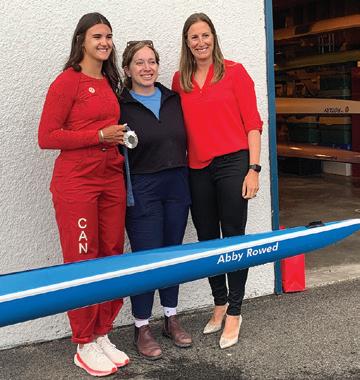
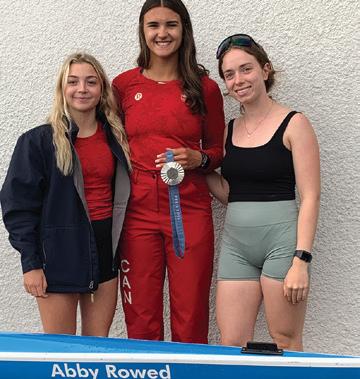
Abby’s trajectory to the 2024 Olympics and her outstanding performance is inspiring other young athletes.
Marissa Tomkins and Emma Thiessen are both first year rowers at the Kenora club.
“She showed us as juniors that it is possible, especially from here, such a small club,” said Marissa.
While both talked about how rowing is physically challenging, they also credit Abby for the “mental mindset” it takes to push through to victory.
“I can’t imagine what she had to go through,” said Emma. “Not just pushing through for herself, but for everyone, your team, and your country.
Both aspire to going further in the sport and say that Abby and the community support have made them see that anything is possible.
Peter and Jen Cano, the club vice-president, were up in the early hours to watch Canada’s stunning finish.
Jen said seeing Abby’s row to a silver medal finish was surreal. “We’re known as this little club without much funding for staffing and coaching and we started this amazing high-performance athlete.”
Peter comments on the “leadership and strength” that shone through with Abby in the stroke seat. “You look at her when she’s rowing, and the style and position are perfect.”
The club had an amazing season, which both say may have been thanks to Abby’s shining example. “Last year we had one person
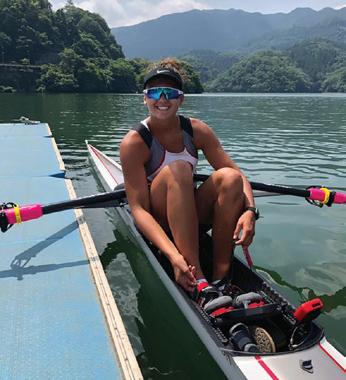
from Kenora competing in our Regatta and this year we had 13.” Jen is referring to the North West International Rowing Association Regatta, held annually at Rabbit Lake.
The club co-hosted a reception with the City of Kenora to honour Abby in September. It was well attended with people of all ages lining up for autographs and a chance to chat with Abby and get their hands on her silver medal. The club christened one of the singles that Abby trained in as “Abby Rowed”. The city is also recognizing Abby as a symbol of dedication and excellence with the naming of “Abby Dent Row” in Rabbit Lake.
Abby will be finishing her degree in Economics and Entrepreneurship in 2025. She plans to continue racing during her senior year with the University of Michigan team. “I’m super excited for this season as we have a very strong team and believe that we have a chance at winning national championships.”
After that, she plans to return to Kenora to take over the family business and coach at the Kenora Rowing Club. “I really want to thank the club for their unconditional support,” she said. “I’m excited to come home and give back.”
As for another Olympics? “We will see if LA 2028 is in the cards and what life holds!”
And the biggest lesson she’s taken from all of this?
“Believing in yourself—even when you don’t want to. People are with you and supporting you but the only person who can make you want to do the work the best you can is you.
“There’s lots of self-talk; you can do it and if you can’t, you need to find the way that works and lets you get the job done.” an
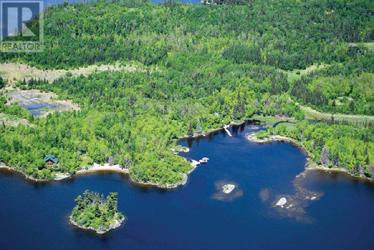

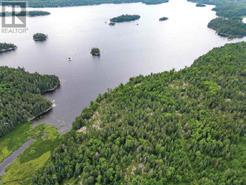

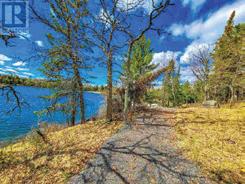
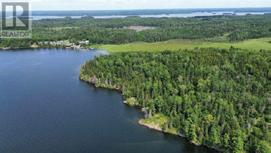


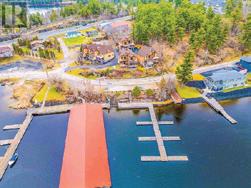
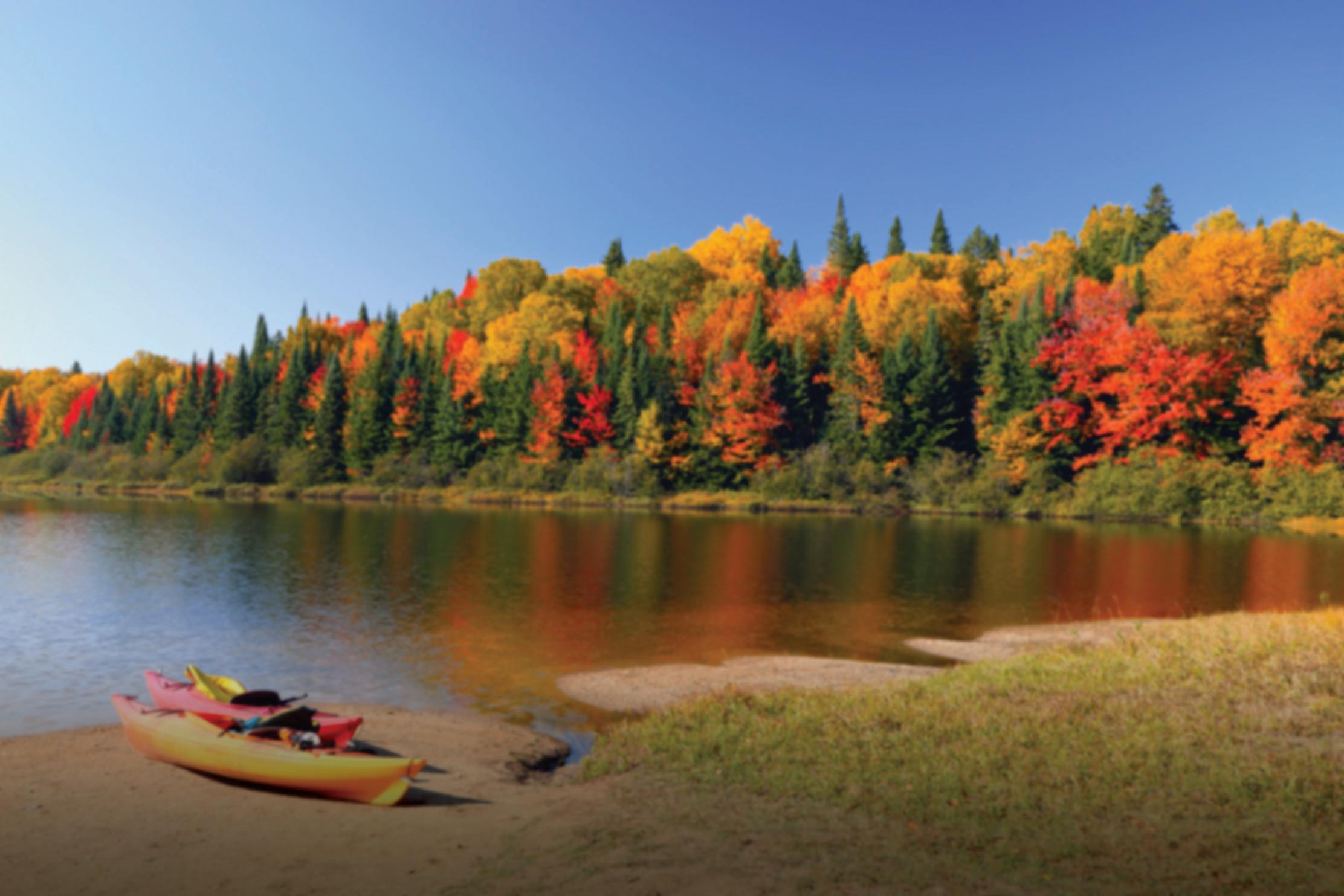

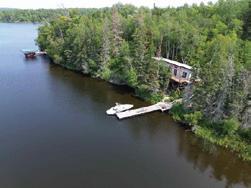
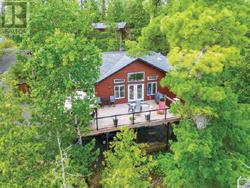




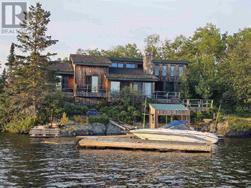
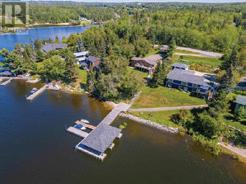


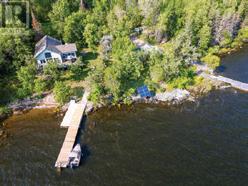


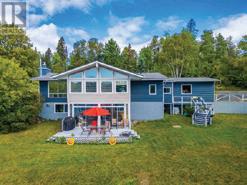
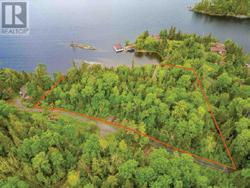




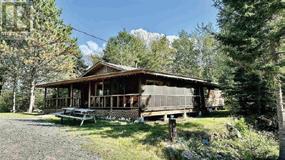
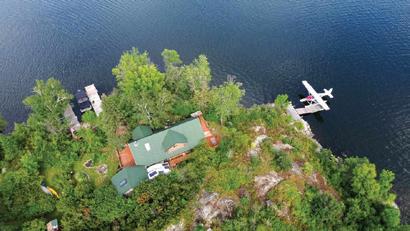

Bathymetry is the measurement of the depth of a water body and it tells us about the underwater profile of the bed of lakes and streams. This information helps us to understand aquatic habitats, how water flows, which areas might be most vulnerable to water levels changes, and how sediments and nutrients move through water.
BY TEIKA NEWTON, INTERNATIONAL WATERSHED COORDINATOR
Recently, the International Joint Commission (IJC) has funded two research projects through the International Rainy–Lake of the Woods Watershed Board (IRLWWB) that involved bathymetric surveys of parts of the watershed. AMI Consulting Engineers and LimnoTech worked on these studies.
In the first project, a survey of the lower Rainy River, in July 2024, the field crew used multibeam scanners to map the bottom of the entire width and length of the Rainy River from Manitou Rapids to Fourmile Bay (Figure 1). The information they have gathered will be used this winter to generate a model of water depths and flows for this segment of the river.

The second project, the Lake of the Woods Southern Shore Barrier Islands Erosion Investigation, was done in 2023.

Pine & Curry Island is in the U.S. and Sable Island is in Canada (Figure 2). Pine & Curry Island has experienced significant erosion at its southwest end since the 1960s (Figure 3).

The barrier islands provide protection to the south shore of Lake of the Woods, an area of sensitive shoreline that would otherwise be damaged by erosion from wind and waves. South shore erosion means loss of critical habitat and increases sediments and nutrients to the south basin of Lake of the Woods, where excess nutrients (phosphorus) already fuels nuisance algae blooms.
The study tested five hypotheses to explain the observed erosion. Is erosion of the barrier islands the result of:
1. High lake levels and large wave events?
2. The construction of the Norman Dam (1890s), which elevated the level of the lake?
3. Interruption of sediment transport from nearby shorelines (i.e. there’s no material feeding the renewal of the islands)?
4. Reduced sediment flows from the Rainy River?
5. Changes (reduction) in ice cover due to climate change, resulting in more wind and wave exposure?
Over the summer of 2023, technicians took bathymetric measurements to map the underwater profile, from the relatively deeper water at Zippel Bay, around these barrier islands, through shallow Fourmile Bay. Underwater doppler acoustic sensors measured wave activity at a depth of 20 m. These data, plus historical information about water levels and island topography dating back to the 1890s, were shared with LimnoTech, a firm that used the information to create a model for how wind and waves operate on this part of the lake. The model simulates what happens to lake bottom sediments and the underwater portions of the barrier islands under different wind and wave conditions.
The study demonstrated that several things drive the loss of the barrier islands.
First, when the Norman Dam was constructed at Kenora, Lake of the Woods rose around three feet—enough to erode the original islands that lay at the mouth of the Rainy River, and to sweep in new sediment from nearby shorelines. These sediments became the barrier islands we know today.




In recent years, major high-water events (especially in 2014, 2022, and likely 2024) have, again, driven rapid erosion of parts of the current barrier islands. Once erosion has begun, the process continues even after water levels recede.
The recent high-water events resulted from increased heavy spring and summer precipitation, which is occurring more frequently as the climate warms. The heavy rain itself can also cause erosion. Ice cover is also diminishing due to climate change and an extended open water period allows for more seasonal erosion from heavy rainfall events, wind and waves.
Finally, in recent years, managers around Zippel Bay have tried to protect that shoreline from erosion by installing hard surfacing. While this has provided intended protection, it also interrupted an important source of sediment that formerly replenished Pine & Curry Island.
The final report from this project, including recommendations to governments for some prospective next steps to try to solve this complex challenge, is available on the IRLWWB website at ijc.org/en/rlwwb. an
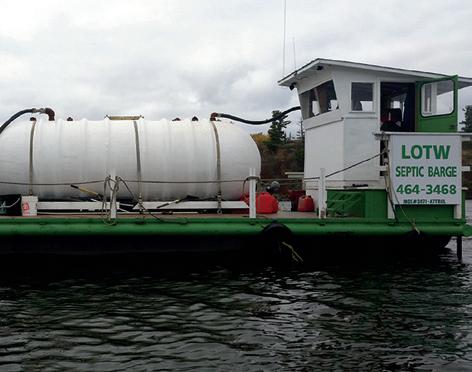



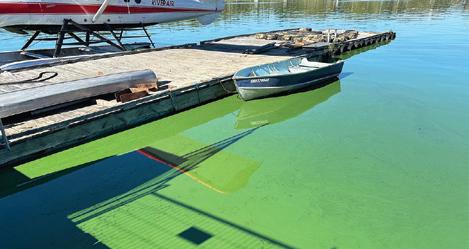

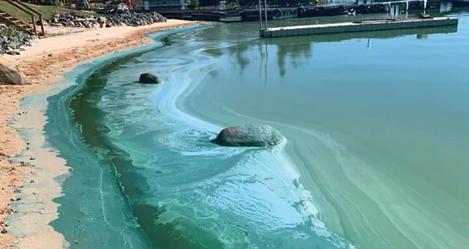
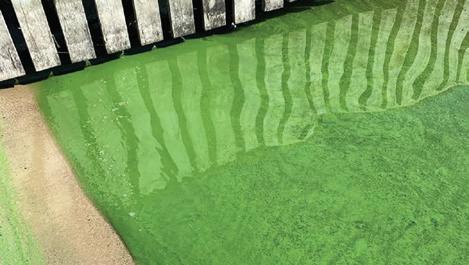
LAKE OF THE WOODS WATER SUSTAINABILITY FOUNDATION
Put a plan in place. Ensure there's enough science and management expertise. Coordinate actions bi-nationally. That’s our mission.
BY TODD SELLERS, EXECUTIVE DIRECTOR, LAKE OF THE WOODS WATER SUSTAINABILITY FOUNDATION
The big story that is on the lips of all lake folk is the algae bloom that has hit the north end of Lake of the Woods and the Winnipeg River with a vengeance in late September. Environment and Climate Change Canada’s EOLakeWatch tool showed significant bloom activity in the Big Traverse (south basin) of Lake of the Woods from mid-August and the bloom tracked steadily northward throughout the month of September.
Twenty years ago, blooms like the one currently hitting Kenora shorelines used to happen about a month earlier, but in recent years, we are seeing a trend toward late summer to fall peaks, with activity typically increasing through October, until cold weather arrives.
In the next issue of Area News, we will provide a summary of this year’s bloom conditions, once all the data are in. Readers are reminded that blooms like the ones in these photos often contain potent nerve and liver toxins. Do not let pets or humans drink or swim in water that looks like this!
The potent late September algae bloom is a good reminder of the Foundation’s work for our watershed. For years, we have been saying that we need international water quality objectives (WQO) for Lake of the Woods, just like we see on the Great Lakes, to address harmful and nuisance algae blooms, among other risks. Lake of the Woods is no less than a Great Lake and deserves just as much care and consideration.
A WQO is a specific and measurable parameter to which Canada and the U.S. have agreed. For Lake of the Woods, for many years, the Foundation has been working with Indigenous and non-Indigenous government agencies in Minnesota, Ontario, Manitoba, Canada and the United States to identify strategies to reduce nuisance and toxic algae blooms. Over the past year,
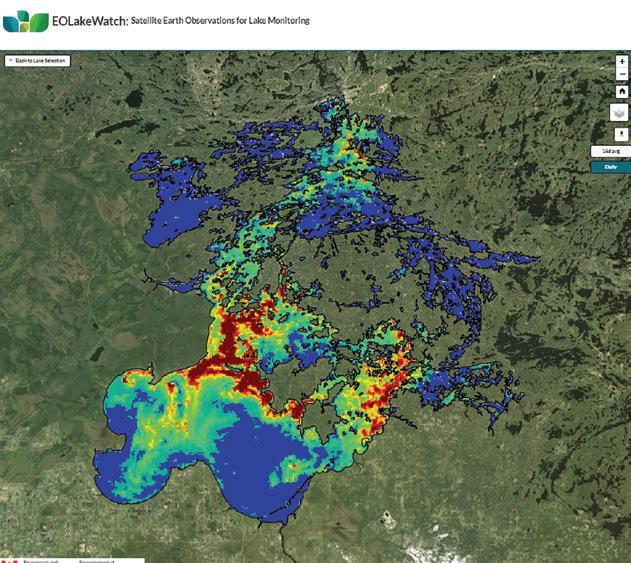
the International Joint Commission funded a project through its International Watersheds Initiative that brought together water quality experts and government agencies to provide advice regarding establishing WQOs for Rainy – Lake of the Woods. This collaborative, international project was facilitated by our International Watershed Coordinator, Teika Newton. Project results were communicated to the International Rainy Lake of the Woods Watershed Board’s Aquatic Ecosystem Health Committee (AEHC) in August.
The AEHC then presented recommendations to the Board in September. Among the recommendations are limits to the amount of phosphorus (the key nutrient involved in algae growth) entering Lake of the Woods each year and goals for maximum phosphorus concentrations in different zones in
the lake that would limit algae bloom formation. The research participants would like to see measurable declines in the severity, geographic and temporal extent of blooms in coming years, and recommended several tools and techniques that could be useful for such assessments, including the use of the EO LakeWatch tools. The Board accepted the recommendations for international WQOs and has requested that the IJC urges the governments of Canada and the United States to adopt them.
On the heels of the WQO project, we are gearing up for new multi-year work focused on nutrients and algae blooms, where we hope to engage people and organizations active in the Rainy River / south Lake of the Woods region. We will provide more information on this project in a future article.
As this issue reaches you, we will be in the midst of hosting this year’s Ask an Expert webinar series. These one-hour lunch-and-learn style webinars cover a variety of topics and air at different times and dates in November and December. Check out this year’s line up on our website: lowwsf.com/ask-an-expert
Finally, we have started organizing the 22nd annual Watershed Forum, which will take place March 12-13, 2025 at Minnesota North College in International Falls. If you’re subscribed to our newsletter, watch for a call for presentation abstracts this fall. Submissions will be due by the end of the year. Information about registration, logistics, and other concurrent meetings and events will be posted to our website, lowwsf.com/watershedforum, where you can also subscribe to our newsletter. an Screen
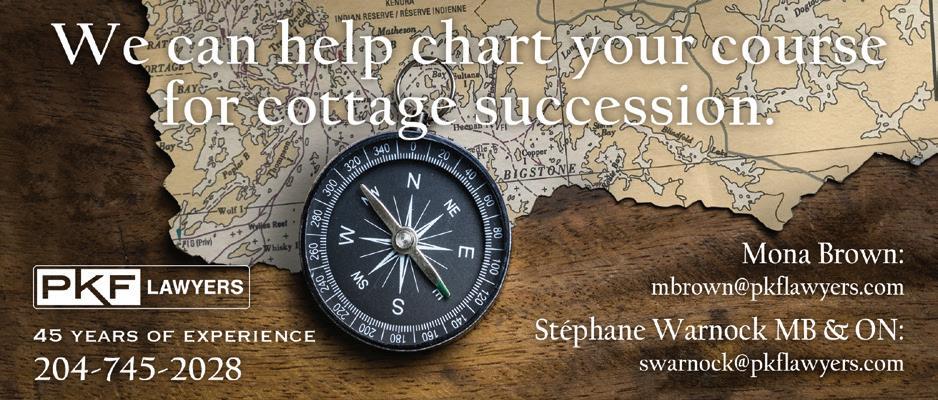
BY IISD EXPERIMENTAL LAKES AREA
As we try to understand how the health of lakes has been changing, it’s important to revisit the basic question: What even is a lake?
On the surface (pun intended), this may seem like a simple question. But definitions of lakes change depending on the context within which we discuss them.
You can, however, identify some general characteristics of lakes in order to differentiate them from other water features and understand what a lake is in the context of your life.
Defining a lake involves considering its physical, chemical, biological, and social features.
Physical limnology:
Lakes form when water collects in large indentations of the earth’s surface called lake basins. Basins form in different ways, like in imprints left by moving glaciers, trenches formed from moving tectonic plates, areas upstream of dams, and abandoned parts of rivers.
Size and surface area help most people identify lakes by sight. Most people recognize lakes as large waterbodies.
Defining a lake becomes more complex when you also consider the waterbody’s depth and bottom structure (i.e., bathymetry). A waterbody may have a large surface area, but if it’s shallow, is it really a lake?
According to some limnologists, lakes range from shallow (sometimes less than 1 metre deep) to very deep. With this in mind, it is important to note that since lakes can range in depth, the dynamics of specific lakes will be influenced by their depth.
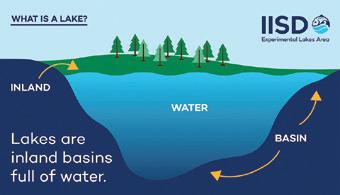
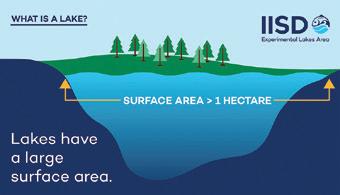
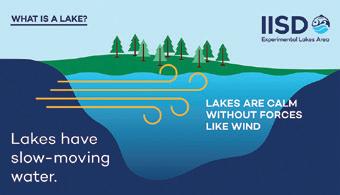

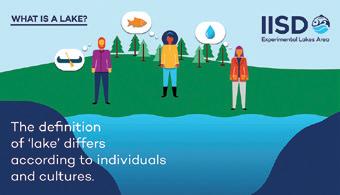
When asking questions about the health of lakes and understanding ongoing lake research, context is always important to consider. Being aware of the context in which a lake is being discussed will help you identify how it’s being defined and what kind of lake it may be.
Probably the most consistent strategy for defining a lake involves water movement. This is easiest to understand when comparing a lake to a river. Lakes are lentic habitats (i.e., habitats with slow-moving water) while rivers are lotic (i.e., habitats with flowing water).
Try looking at a waterbody on a windless day—is the water still moving or is it calm? To the human eye, lakes will remain calm on a windless day, while a river or stream will continue to flow.
Lakes are not necessarily differentiated from other waterbodies solely based on chemistry. However, the proportions and movement of chemicals in a waterbody can help us describe how it fits into the landscape.
Lake chemistry relates to physical features, such as the lentic nature of lakes, lake basin geology, and how water flows through the lake. Closed lakes, for example, lose water via evaporation (compared to open lakes that have stream or river outlets). Closed lakes are usually saltier than open ones because evaporation leaves behind dissolved chemicals and nutrients.
Have you heard of the Dead Sea? This well-known lake is so salty that only highly specialized organisms can live in or near it and visiting swimmers can float on their backs and read without getting their book wet.
Are there fish in it?
Lakes and other waterbodies are important and complex ecosystems. The biota living in a waterbody can hint at whether it’s a lake or not. As lakes are considered big bodies of water, it’s helpful to consider what and how larger species use the water.
Lakes are often permanent habitats for fish because they can be big enough to retain good habitat throughout the year—sometimes even in -40°C temperatures.
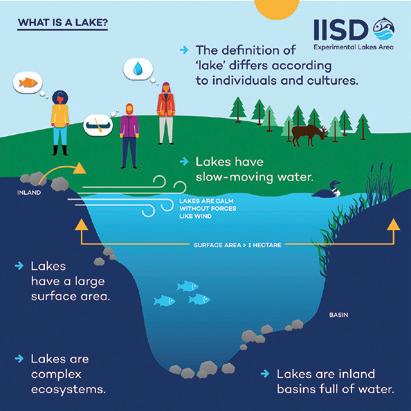
Not all lakes, however, support the same animal communities, so there is no rule for what lives in lakes versus other waterbodies.
Human cultures around the world recognize lakes as essential parts of their environments. Living in the lake-rich Canadian boreal ecozone, it’s clear that people depend on lakes for navigation, recreation, education, survival, and wellness.
Whether you're exploring trails, cruising on frozen lakes, or adventuring through deep backcountry, snowmobile insurance provides critical protection - giving you peace of mind as you navigate rugged winter terrain.
Snowmobile insurance can protect against various risks including theft, vandalism, and liability.
Get in touch with one of our insurance specialists to find the right coverage and stay protected this winter.
Lakes can be identified by their unique social and mystical relevance. For some Indigenous peoples, lakes have Mishibeshu, or Water Panthers, that influence the weather, safety, and sometimes prosperity of lakes for humans. Mishibeshu may shape each lake in a different way, which controls the unique characteristics of that lake.
In short, when differentiating a lake from other waterbodies, the things to remember are:
• Lakes are inland basins full of water
• Lakes are large in surface area
• Lakes have slow-moving water
• Lakes are complex ecosystems
• Lakes differ across cultures and geographies—there is no one single way to define a lake.
To learn more about freshwater health and the incredible science that takes place at the world’s freshwater laboratory, visit iisd.org/ela. an
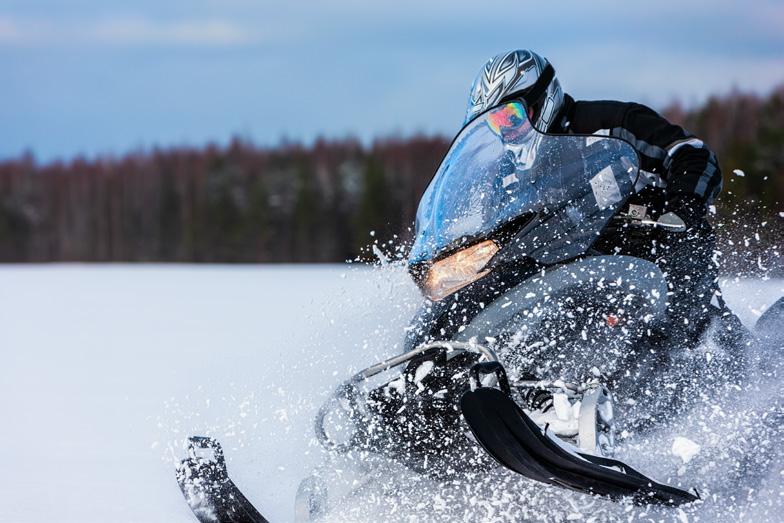


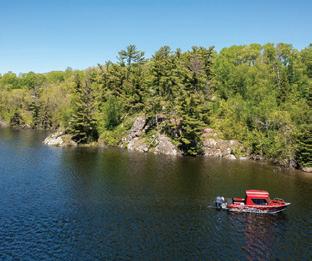

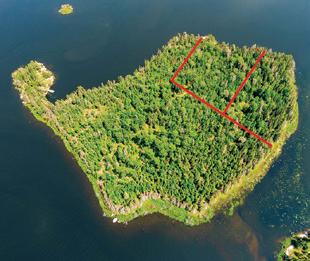
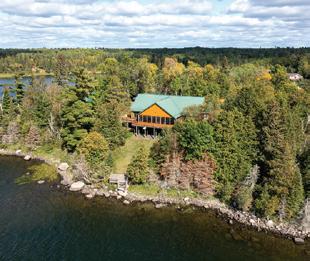
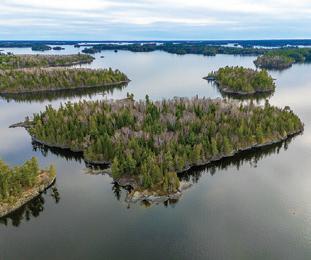
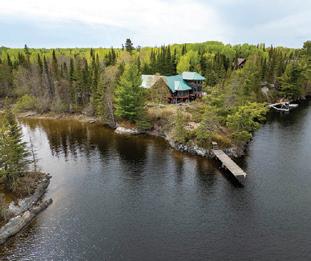
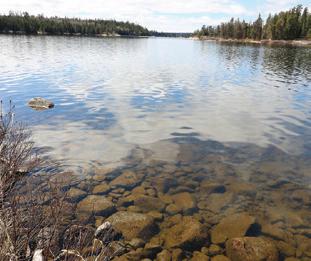


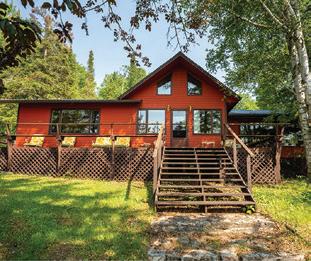
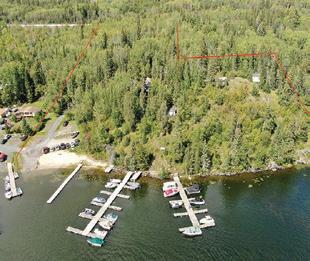
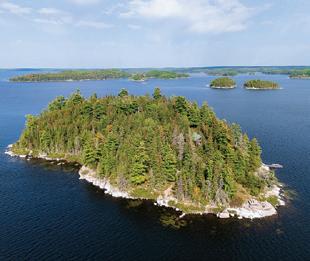
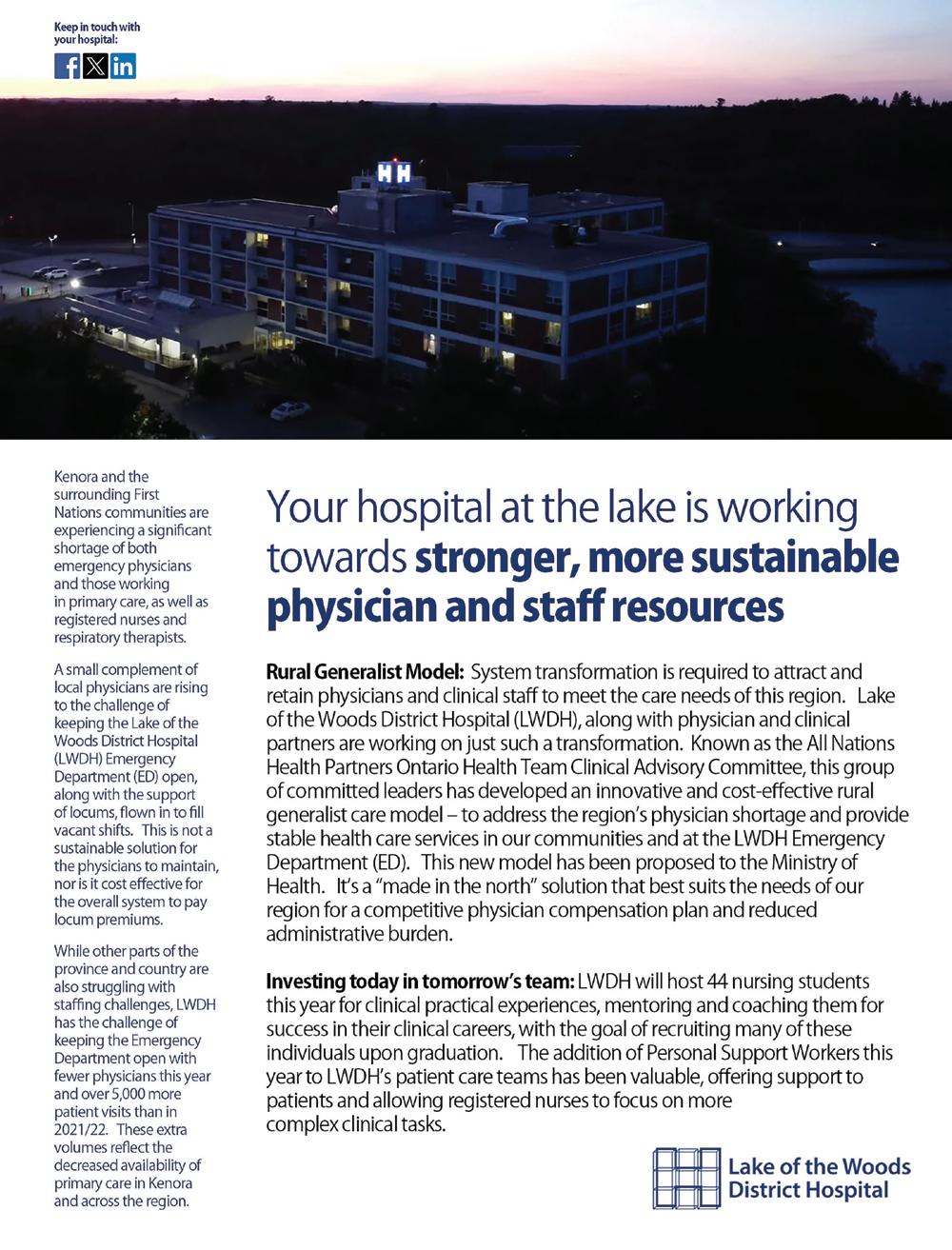
BY CONNIE LARSON
Whenever I think of winter, I think of resting; of hibernation; of silence on our remote island; but the one thing that I think of most, being a steward of the lake, is the healing that winter brings to that beautiful body of water that we so love. It is as though nature itself has provided this time for the great northern body to dispense of all human impact—to rest and revitalize.
The terns turn
It was mid-September. A lovely fall day. Feeling that late summer feeling. Cool mornings but kissed by lovely warm sunshine by afternoon. Leaves were turning. Our garden on the island lay dormant as we picked the last of the root vegetables. Most seasonal residents had left.
The air suddenly filled with boisterous squeals. The shrill of a huge quantity of terns melding with the wavering call, called the tremolo of adolescent loons. We hurried down to the water’s edge at the northwestern shore of our island to see this incredible dense population of two very different types of water birds. They appeared almost to be a floating raft as they drifted down the lake and finally out of sight, their calls no longer distinguishable. I imagined the immature loons who left several weeks after their parents to be guided south by these gliding long-distance migratory birds. It was the terns turn to lead the way.
The day would end quickly with a bruised horizon on the lake as the fire ball of the sun dipped quickly. It left us at twilight to light lanterns and prepare for dinner.
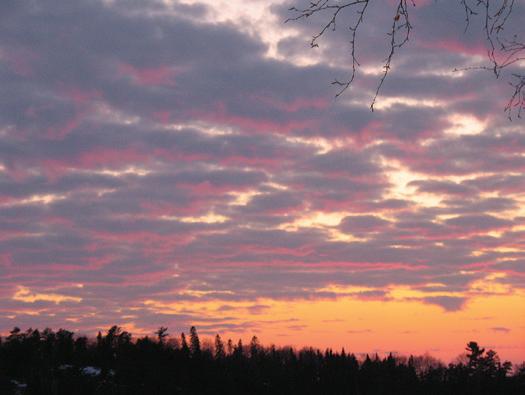
Halloween had passed. As usual, a light dusting of snow came but did not stay. The earth’s warmth dissolved the crystals. November came and the lake water thickened like turning maple sap to maple syrup. Snowflakes dropped silently from the sky, briefly staying afloat on the water, accumulating here and there and then sinking below.
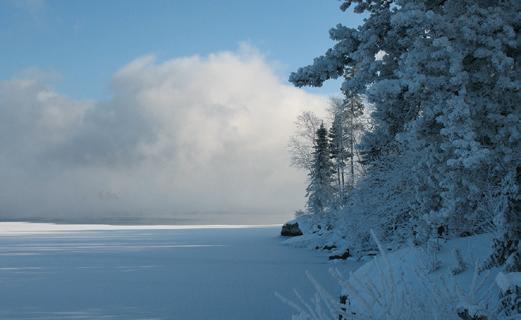
Shallow bays had already frozen, but not so on our island on Whitefish Bay where depths around us were sixty feet to over 200 feet from north to south. Our boat was in storage, and we waited, alone.
December came and gradually the ice formed from shore, creeping outwards, bridging the gap between our island and neighbouring islands. Nothing seemed to move, no bird, no mammal, no humans—only the ice and the wisps of smoke from our chimney. Temperatures plummeted to -21°C. The start of winter in the north.
We awoke to the chatter of thousands of birds chirping and tweeting. Our single pane windows did nothing to stop the insistent chatter. It was the lake. Overnight the ice had extended, building a fragile fortress around us. The delicate ice crystals were not strong enough to be a solid mass. The water below was in constant flux and so the tiny crystals collided on each other creating a masterful orchestra.
The last of the waters of the lake would take two to three weeks to freeze over. The deepest part of Whitefish Bay resisted. Great billows of steam angrily rose from its surface as though defying the inevitable.
The colors of late fall as the sun slips below the horizon.

Time seemed to stop. Freeze-up was upon us. The ice was safe enough to walk around our shoreline, but it was not safe to make our way to mainland. Mainland was four and a half miles away, over the deepest part of the lake. It was not safe. Not yet.
We had adopted a method of checking the ice told to us by one of the people who spent his whole life on the lake. We had a heavy needle bar. Thrown ahead like a javelin the heavy bar would
bounce off the ice or go through. If it bounced, we had enough to walk. I would not suggest this method for anyone.
We cross country skied to mainland late December using the needle bar the whole distance and particularly cautious over the deepest section that froze last. We had three to four inches of solid ice.
My husband had worked with our Alaskan Malamute on land to pull a toboggan. We had invested in a cedar custom made kick sled, light weight with thick Teflon glides. I took the journey numerous times across the lake. The four and a half miles took us approximately twenty minutes. I stood on the runners as Sekima easily raced ahead.
By January 1, our lives were interrupted with snow machines and trout fishermen; by the formation of ice roads criss-crossing the expanse. Their arrival brought new freedoms but also a mild sense of invasion to a world that can only be defined as total solitude; only defined by your own thoughts and that of your small unit—as we were—by just a couple and their malamute. But the lake did not mind. There was so much left of winter’s rest. Three feet or more of ice protecting her, it was just the start of her five-month sleep. an



The holiday season is a wonderful time of year. Consider making it even more special by reducing unnecessary expenditures, using your creativity, and making sustainable choices when it comes to decorating your Christmas tree and your home.
BY SHARON GURNEY
Natural vs artificial. The best option may surprise you!
Many people struggle with whether it is better to purchase an artificial Christmas tree or choose to get a real tree. Here are some points to consider when you are making your choice.
During the pandemic our family transitioned our annual Christmas celebration from the city to the lake. We agreed we would simplify our traditional celebration, and work to make our gathering both creative and sustainable. We harvested our Christmas tree on our property under the hydro lines, as we knew these trees would eventually be cut down by Hydro One. We decided to use only natural materials from the outdoors, and work towards decorating our tree in a way that wildlife could enjoy our tree once the Christmas season was over. Here are some of the materials we used to make our sustainable ornaments.

The Nature Conservancy (nature.org) supports the use of real Christmas trees. They argue that real trees help fight climate change, and even though the tree is cut down, forests are still being supported. Only a small fraction of trees grown on tree farms are harvested each year. Buying real trees helps keep tree farms thriving, and in turn, this land remains a healthy forest that wildlife depend on for food and habitat. It takes around seven years to grow an average-sized Christmas tree, absorbing carbon from the atmosphere as it grows. New seedlings are planted to replace harvested trees. Also, real trees can be recycled/reused and given a second life as mulch for landscaping, gardening, and erosion control. You can also choose to leave the tree in your backyard for wildlife to make use of, especially if you include some edible decorations.
On the other hand, artificial trees can be used for many years if well cared for, but they have drawbacks. The production of artificial trees consumes significant resources including plastic and metals. Many artificial trees are produced in China which gives them a large carbon footprint by the time they arrive in our living rooms. The One Tree Planted organization (onetreeplanted.org) reports that a consumer would need to reuse an artificial tree for at least 10 years to have the same impact as using a live tree each year. That does not consider the environmental impact of the plastic once you dispose of the tree.

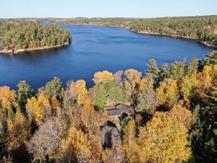

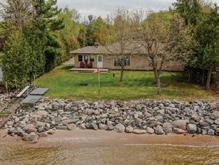

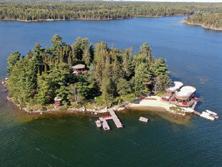
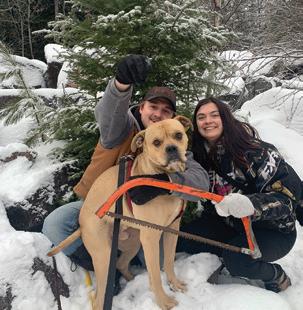
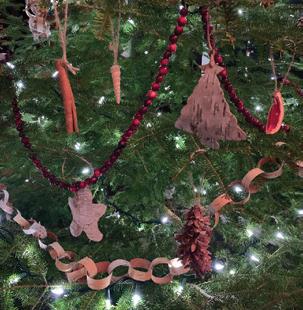
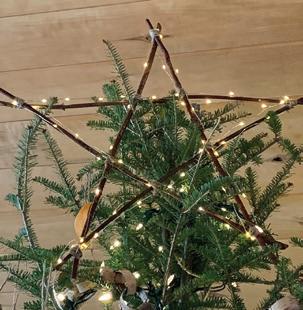
• Using jute and a darning needle, we strung together fresh cranberries. Strings of popcorn or peanuts would have been another great option for the birds and squirrels to eat after Christmas.
• Dry orange, lemon or lime peels were used to make fragrant and edible ornaments.
• Using the bark from a downed birch tree, we cut out shapes such as stars, moons and gingerbread men. Strips of birch bark were threaded to make an attractive birch chain.
• Pinecones sourced from a variety of evergreen species were hung with jute. Consider covering these cones with seeds and peanut butter when you hand the tree over to your backyard wildlife.
• Pinterest is a great place to find other ideas on how you can make beautiful, creative and edible ornaments for your tree, and decorations for your table and home.
In the spirit of the season, how about giving Mother Earth the gift of sustainable choices for decorating and celebration. an
• The City of Winnipeg’s has the “Let's Chip In” Christmas tree recycling program. Drop off at one of the many depots around Winnipeg.
• The City of Kenora offers free Christmas tree recycling at the Transfer Station (401 Mellick Ave) every January.


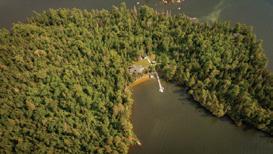
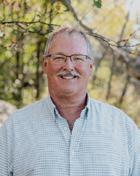

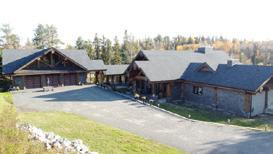
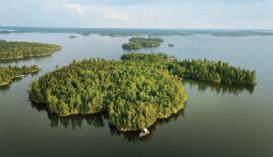
BY LEANNE FOURNIER, WINNIPEG RIVER
My mom and I, along with my aunts and cousins, would often embark on a taco-making frenzy on a late winter afternoon, usually a weekend, when there wasn’t a whole lot else to do in my old hometown of Pine Falls, Manitoba. Many hilarious antics arose during all stages of the recipe preparation, cooking and devouring.
I am not Spanish and have only been to Mexico twice. The authentic recipe came to town with a Mexican woman who married a local. My mother recalls, “We were eating tacos before anyone else in Canada!” When I posted photos on Facebook as I prepared them one January evening, it unearthed a flood of comments—first from people from Pine Falls who didn’t have the “famous” recipe and second, from those who did have it and had their own fond memories of its partaking. And of course, I heard from many new friends who wanted the recipe too!
Ingredients
Shells:
2 cups flour
1 cup cornmeal
1 tsp salt
1 egg
3.5 cups water
Meat filling:
2 1/2 cups ground beef
1/2 cup chopped onions
1/2 cup chopped celery
1 tbsp cumin
1/2 tsp chili power (or more to taste)
1/2 tbsp garlic power or garlic cloves
1/2 tbsp basil
Salt and pepper to taste

You can definitely alter the recipe for your taste and lifestyle. Lettuce and store-bought salsa work just fine, but the flour and cornmeal shells are what makes this recipe a showstopper.
Buen provecho!
Sauce: (can substitute canned salsa)
2 cups stewed tomatoes
Fresh basil, garlic powder, cilantro, hot sauce to taste
Suggested toppings:
Shredded cheddar cheese
Shredded cabbage or lettuce
Guacamole (that’s a recipe for another day)
Hot peppers
Sour cream
Instructions
Prepare the meat first. Brown beef, add onions, celery and spices (spices can all be to taste but cumin should be the most prominent flavour). Don’t overcook as you’ll be reheating. Remove meat mixture from heat and put it in a bowl to cool.
For the shells, mix all ingredients together to pancake batter consistency. Spread a thin layer of batter onto a lightly greased grill or large frying pan in the shapes of pancakes. They should be crepe consistency. I usually do two at a time. Flip once. Don’t overcook or use too much oil as you want to be able to fold and press these. When done, remove shells to a surface with wax paper. Pour two more shells (quickly now). Spread meat on half of still warm shells (don’t overfill). Pinch sides together, leaving top open (I dot water around the edges so it sticks better and to cool my fingers). Line folded tacos on a cookie sheet as you continue assembly.
Once all tacos are assembled, reheat at about 350 for 30 minutes (flip half way) to give them some crunch. You want them to be warmed but not overly crispy, so they don’t crack while eating.
This recipe is from the days before there was good salsa readily available to that is a fine substitute. If you don’t have salsa or want the traditional recipe, mix all the sauce ingredients and puree to chunky consistency (do not cook).
To serve, gently open the tacos and fill with cabbage or lettuce and sauce along with your choice of shredded cheese, sour cream, etc. Note that the cabbage adds a really nice extra “crunch”. Guacamole and hot peppers are also good toppers.
This is a large recipe (about 36 tacos) so you may want to freeze some. Wrap well on a cookie sheet (don’t reheat) and put in the freezer ovenight. Once frozen, remove from trays and put in freezer bags for storage.
Article and photos by Drew Monkman

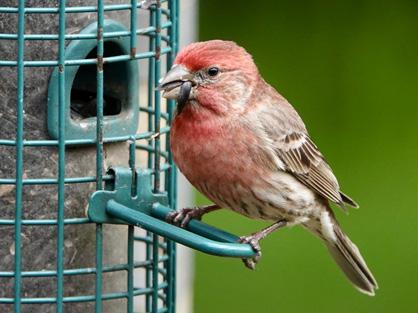
When I was 12 years old, my father and I built a bird feeder. Even though I had no special interest in birds at the time, it was a fun project. However, when house sparrows and evening grosbeaks flocked to the new feeder within days, my curiosity was immediately piqued. One morning I noticed that one of the “sparrows” looked different. It had a tinge of yellow on the sides and fine streaks. When my father borrowed a bird guide from a naturalist friend, I tentatively identified the visitor as a dickcissel. Although the friend was skeptical at first—unbeknownst to me, this was a very rare bird—he came over and, with great excitement and heaps of praise, confirmed my identification. My pride swelled even more when at least a dozen other birders also dropped by to see it. This experience with a backyard feeder was the beginning of my life-long interest in birds.
Inviting birds to your yard is a wonderful way to brighten winter days and all the other season as well. Well-maintained feeders that offer a variety of foods can attract a wide variety of resident birds as well as species that only show up during migration. And, as I discovered all those years ago, you can never be sure just what fascinating bird might pop in.

will come to these

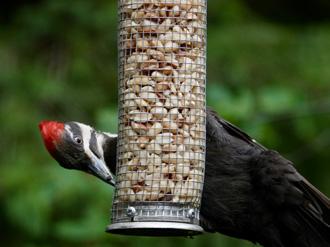
With patience,
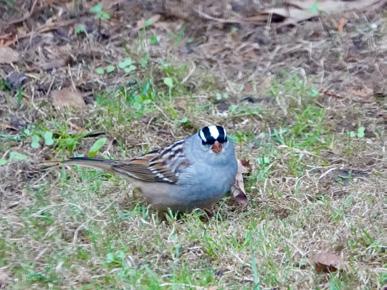

Most of the enjoyment of having bird feeders is getting good views of the birds that come to dine. Ideally, feeders should be placed close to a window where you spend a lot of time. You should also try to find a location near natural shelter like evergreen trees or shrubs. Many birds shy away from eating in an exposed areas with nowhere to take refuge. You may also want to plant more trees and shrubs in a good feeder location. Conifers are especially attractive to birds.

The easiest way to hang your feeders is by purchasing a feeder pole system. It consists of a pole with a squirrel baffle and hanger arms. As long as squirrels can’t jump from a nearby branch or roof, this kind of system will keep them off the feeders.
Don’t make the mistake of limiting feeding to the winter months. I have my feeders out from early October through late May. In this way I’m able to attract migrants that are passing through. These include a host of different sparrows in the fall and spring and Baltimore orioles, rose-breasted grosbeaks and ruby-throated hummingbirds in May. To attract orioles and hummingbirds, you’ll need to put out your nectar feeder. Orioles also love cut oranges.
Black oil sunflower seed is popular with nearly all of the birds that come to feeders. These include jays, cardinals, chickadees, nuthatches and sometimes even woodpeckers. If you only have one feeder, fill it with this one. Although more expensive, you might also consider hulled sunflower seeds which are the seeds without the shell. Goldfinches love these. An advantage to hulled sunflower is that there are no shells to rake up off the lawn.
If squirrels present a challenge, look for a feeder model with a weighted squirrel guard. The weight of the squirrel forces the perches to drop down and close the feeding holes. As long as you’re able to keep squirrels away, there’s also the option of buying a hopper feeder which usually holds more seed than tubes.

You might also want to consider a window feeder. They offer great, up-close views of the birds and keep them safe from window collisions. I have a clear plastic hopper model with suction cups on my office window.
Birds also love shelled peanuts. They are high in protein and a favourite of nuthatches, woodpeckers, chickadees and Carolina wrens, to name a few. You’ll need a wire mesh tube feeder that the birds can cling to while they feed.
Nyjer feeders are also a popular choice. Nyjer is a tiny black seed grown in India and Africa that’s a favourite of birds like goldfinches, siskins and redpolls. You can purchase either a plastic tube with small holes and perches or a tube made from a fine metal mesh.
Beef fat, usually referred to as “suet”, is another highenergy food that attracts birds, especially woodpeckers and nuthatches. Commercial suet often contains seeds, peanuts and dried fruit and is usually sold in square cakes which can be placed in a metal cage. Look for a model that forces birds to hang upside-down while feeding. This will keep starlings from devouring everything.

Some birds like juncos and both white-crowned and whitethroated sparrows rarely go on feeders. To attract these ground feeders, spread white millet seed on the grass or on packed-down snow under the feeder. Just scatter it sparingly enough so the squirrels don’t get too much.
Finally, if starlings and grackles are consuming all of your sunflower seed, you might try offering safflower seed. Although most of your favourite birds like cardinals will enjoy it, blackbirds aren’t big fans.
Feeders should be cleaned about once a month to remove wet, moldy bird seed and bird droppings. Use a three-toone water-vinegar solution or a nine-to-one water-bleach solution. This will help prevent the spread of bird diseases. If window collisions become a problem, try putting bird collision deterrent markers on the window(s). They consist of dot patterns and are sold as easy-to-apply, long-lasting tape. Go to featherfriendly.com for more information.
And, please don’t worry. Feeding birds won’t prevent or delay their migration, and the birds won’t become dependent on you for food.
An excellent resource for feeding birds can be found at allaboutbirds.org.
Great Backyard Bird Count: Let bird researchers know what’s coming to your feeder by participating in the Great Backyard Bird Count which takes place from February 14 – 17, 2025. This community science event engages bird watchers of all levels of expertise to create a real-time snapshot of the whereabouts and relative abundance of birds in mid-winter. Go to birdcount.org for details. an
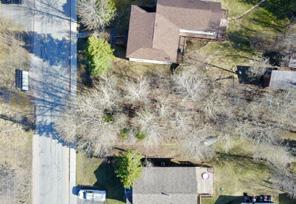
881 4th Ave South
Rare find! Infill residential lot in Lakeside.
This lot is +/- 49’ x 159’ and has never been developed. Services are available in this neighbourhood. Zoned R1.
$94,000
Cabin Country Realty
807-468-3541 / cabincountry.com
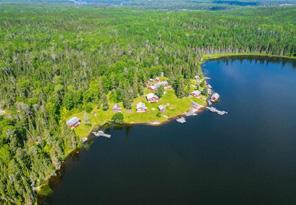
Rough Rock
Private Retreat!
Multi-generational retreat or business opportunity on 5 acres w 700 ft. waterfront—you decide! Previously operated as a fishing lodge.
$1,500,000
Shelley Torrie Home & Cottage Realty 807-547-4020 / kenora-realestate.com
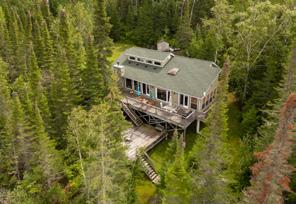
Lot 4 Lily Pad Bay
This professionally built four-season lake front cottage will impress you from the foundation up!
$999,000
Cabin Country Realty
807-468-3541 / cabincountry.com

Sabaskong Bay, Lake of the Woods
2.05 acres of wooded land with 184 feet low profile rock shoreline. Road Access.
$109,000
Greg Kirby, Re/Max First Choice Realty Ltd 807-466-8266 / gregkirby.ca
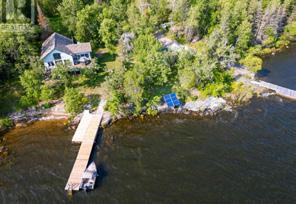
Lot 4 Wolf Island, Kenora
2-bdrm open-concept cottage on Wolf Island, LOTW. Sunroom doubles as 3rd bdrm. Guest cabin, 150+ ft south-facing frontage. Solar power, water setup, floating dock & ample storage.
$445,000
Century 21 Northern Choice Realty Ltd. Independently Owned & Operated – Brokerage 807-468-3747 / century21kenora.com
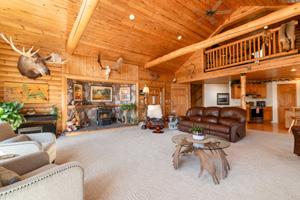
880A Cedar Point Road, Waldof
Stunning 7BDR, 3BATH log cabin on 2.4AC with rustic design, modern amenities and breathtaking views! Great room with vaulted ceilings, loft, and luxurious master suite. Guest cottage, trailer spots and an attached garage.
$1,395,000
RE/MAX NorthWest Realty Brokerage 807-468-4573 / remaxnorthwestrealty.com
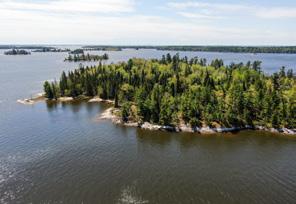
Island Building Lot
Rare island building lot just north-west of Morson on Lake of the Woods. 2.46 acres with 676 ft. of shoreline. Map available on our website.
$199,000
Northwoods Realty 807-226-1024 / northwoodsrealtyltd.com

181 Gould Road, Kenora ON 4-bdrm, 2-bath waterfront bungalow on Laurenson’s Lake. Open-concept with cathedral ceilings, gas fireplace, walkout basement, sunroom, sauna & fenced yard with gazebo.
$689,900
Century 21 Northern Choice Realty Ltd. Independently Owned & Operated – Brokerage 807-468-3747 / century21kenora.com
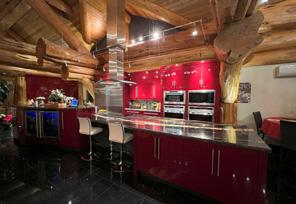
NEW: Middle Lake/Winnipeg River
Renowned Pioneer Log Homes craftsmanship— prepare to be impressed! Situated on 12.11 acres on Middle Lake, offers exceptional privacy with gradual slope to the dock. Built in 2015, 8,184 sqft of living space over two levels.
$4,950,000
Carmichael Real Estate Inc. 807-466-2236 / lakeofthewoods.net
Email membership@lowdsa.com or mail LOWDSA, Box 1160, Kenora, ON P9N 3X7
Next submission deadline: February 17, 2025
Please try to keep your listing to 35 words or less.
Cabins For Rent on LOTW. Located on a peninsula 7 miles south of Sioux Narrows. Everything is new or nearly new condition. Rates from $199/day to $899/day. Text 218-3102200 for photos & more info.
LOW Storm Bay Rd 9. Large house with 9 bdrms, hot tub, multi level decks, granite kitchen, boathouse, sauna, WiFi, fireplace, washer & dryer, dishwasher. Kayak & boat are a possibility. $2500-$7000 weekly. Discounts available in the fall. mail@ markmcgregor.ch
Brule Point lakefront 3 bedroom cabin, LOW. Fantastic fishing area, quiet bay, two docking facilities with plug, private beach, fully stocked including freezer, large deck. Cabin sleeps 5, single bathroom/shower. Boat access only. 2024 rate $1390/ week. Contact donna@taketwoinc. com.
Lakefront on Trout Lake. 20km north of Kenora. 2 or 3 bdrm cabin available for rent weekends or weekly May-Jun. Full kitchen & bathrm, TV/ DVD, BBQ. Comes with canoe, kayaks & 12 ft. alum. boat. Deck off front of cabin; private deck at water’s edge; your own sand beach. Spring fed lake with crystal clear water. troutlake596@ gmail.com
Lakefront Cottage for Rent - Locke Bay. Road access 15 minutes North West of Kenora. Built in 2017 with 2 bedrooms and 1 bathroom. South exposure with private dock. Fully furnished. Includes Satellite TV, Internet, A/C, BBQ and fire pit. Would prefer a seasonal rental May - Sep $22,000 or $2000 week (2 week min). Email kenoracottage@ hotmail.com for more info.
Cottage for Sale – Clearwater Bay. 3 bed, 2 1/2 bath, 1400+ sq. ft. seasonal cottage w crib dock & wired boathouse on LOTW, Inglis Road – 1.346 acres w approx.102.7 ft. of south facing waterfrontage. $2,000,000. Call 807.407.6992.
Camp/Estate For Sale on LOTW. Located on a peninsula 7 miles south of Sioux Narrows. It is like an island, except you can drive to it. Everything is new or nearly new condition. Could be a camp but would be PERFECT as a Family Estate or Corporate Retreat. Asking price $3 million or best offer. Owner will finance. Text 218-310-2200 for photos & more info.
Part-Time, General Labourer. For help around the cottage and land, possibly 3 days a week. Location: Northern Harbour area at the end of Storm Bay Road. Contact E-mail: peterzaj@mymts.net.
2 Steel Entry Doors , 2 Aluminium Storm Doors. C/w frames for sale: $35 each . Also 1 only vintage Fuel Oil Space Heater : $170. I will supply photos when you email, peterzaj@ mymts.net
Young Chang 6ft.10in. G208 semi concert grand piano in excellent condition. Enhance the sound and visual aesthetics of your home or cottage with this beautiful instrument Asking price: $14,000. Call 807 407 5891.
PORT A DOCK Aluminum Boat Lift. $4,000. 58” vertical lift, 4000 lb. capacity, electric or manual. Located in Echo Bay, LOTW, Rush Bay Rd. Contact echobay@bell.net or call 807-733-2187.
“Find Your Voice.” One-on-one painting lessons designed to your interests. I have over forty years experience teaching all ages. Supplies are included. I teach traditional techniques and how to blend them. Contact, pippij69@gmail.com.
Duo-Therm oil heater. 17"W x 21"D x 34"T. Asking $150. Ted 204-2944891
All classified ads are posted online at lowdsa.com. Note that they are posted within a couple days of submission and not subject to magazine deadlines.
8ft of 6" SS chimney. Complete with interior box, roof pieces & hat, asking $550. Ted 204-294-4891
13'8" fiberglass kayak. Very light, no leaks. Comes with paddle & cockpit cover. Asking $550 Ted 204294-4891
JetSki/SeaDoo Floating Dock. Used floating dock for sale. Available for pick up in the Kenora area (Coney Island). Large size (XL6). It weighs 375 lbs and can handle 2,000 lbs. New ones run, with tax about $4,000+. Includes mounting hardware. Priced at $2,500. Contact dmoll@shaw.ca or call 204-3914580.
Exquisite high-end antiques for sale. These include a 9-piece walnut dining set, ladies spinet desk, roll top desk and swivel chair, carved curio cabinet with two curved beveled glass doors and matching grandfather clock from Austria, walnut cabinet with beautiful hand-carved panels in the doors from Belgium, and Dresden candelabras. Excellent condition. Prices negotiable. Must be able to take away. For more information and pictures call or text 807-465-4555.
10x10 old log shed. 14" overhang. The bottom has some rot but if someone is interested in dismantling and moving it to a new foundation it would be a very cool garden shed or playhouse for kids. We'd just love to see it repurposed as it is pretty cool. Dismantling/PU at Trinity Bay (boat access only) Email mridgen@aptn.ca.
Boat Rail System, Morson area. Approx. 100 ft. long with carriage for 17’ to 20’ boat (more or less) complete with winch system powered by a solar panel with charging system not including battery. Asking $3750. jaslaw1@shaw.ca.
48'+ houseboat. Preferences: aluminum pontoons; outboard motor; upper helm; 2-3 bedrooms. mikeg@ wakemarketing.ca
Gently Used , Personal "SnowPlow." To fit front mount 2 inch receiver hitch on full-size SUV. Please E-mail Peter at peterzaj@ mymts.net.
Snow Blower or Garden Tractor. Looking to buy a good condition, used, gas powered 30 inch or larger, with Snow-Thrower attachment and or Blade. Contact: peterzaj@mymts. net
Pre-owned boat trailer. For 17 1/2' Lund aluminum boat with 50 hp tiller motor; prefer 13" tires although not mandatory. Bunk or rollers. Contact 204-782-2808 or email jim.coldwell@ mymts.net.
JY15 Sailboat, good condition. $2,400. Ph/Text: 204-781-6807.
19.5 StarCraft, Sportcraft, deck boat. 150 E-Tech motor, boathouse stored, less than 30 hours, g.p.s., Trailer. 204-668-7185 or 807-7001581.
2003 Glastron SX175. Asking $8,500, Volvo Penta 3.0L Engine. Hull and engine in GREAT condition. No trailer. Contact: 204-2966427 .
16’ Alumacraft runabout. w/25HP Yamaha outboard, Shorelander trailer, Minnkota trolling motor, live well, new LowranceHook 9” fishfinder, new custom cover. Marina stored/maintained. Used max 2 weeks/year. Available 10 Jul. 13K US$. 209-743-4172.
1984 Tiara 31’ Lake CruiserLive aboard. Low-time Twin 350 Crusader engines, all new interior refresh with XM and loads of equipment. This ex-Great Lakes boat is ready to go. Contact at 204292-3970.
LOVE DOGS? It's A Dog's Life needs foster and forever homes for their rescue dogs. Cottagers can help with short or long term fostering or adopting. Website: adogslife.cc or call 807-467-3647.
FOUND On Lake of the Woods. Pelican single-person kayak. Colour: blue; Serial number ZEP69624C60? Contact Peter Z. at e-mail peterzaj@mymts.net with the last number, and claim your kayak.







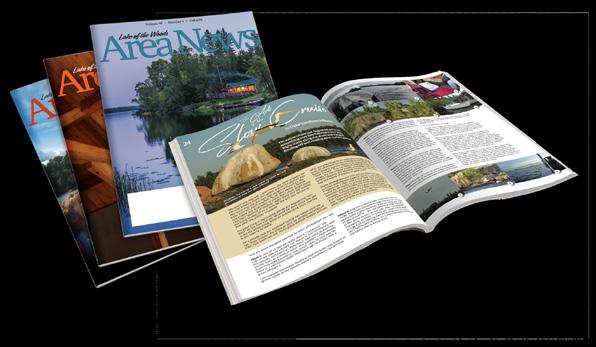





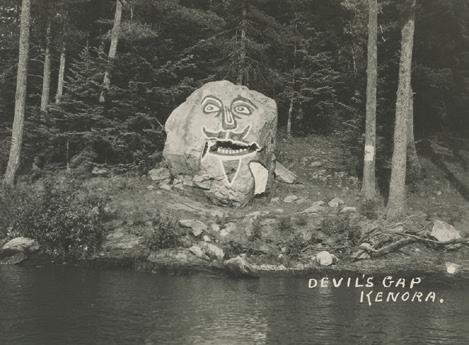
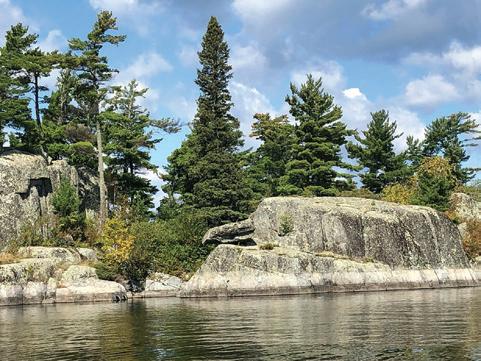
BY LORI NELSON
This past July, I conducted an informal survey with a select group of 29 people who I knew were familiar with the lake. The survey consisted of one question: What are the three landmarks on Lake of the Woods, natural or man-made, that immediately come to your mind?
The 18 responses I received came back quickly and they were both expected and surprising. As expected, at the top of the list was the Devil’s Gap Rock. It was followed by Husky the Muskie. Then came the surprises. There were 27 other landmarks mentioned and most were noted by one individual only.
What became apparent was that many landmarks were identified based on what part of the lake people were most familiar with. Their well-travelled routes brought them through Rocky Narrows or the Manitou, through the Hades or west to S Island.
Those who had ventured further down the lake mentioned the Sable Islands, Tranquil Channel Narrows, Whitefish Bay, Turtle Portage boat lift, and the Northwest Angle.
In a number of instances, the landmarks noted were personal. A couple of people mentioned their own camps or islands, or a place that had significant personal meaning. One respondent talked about a rock off the Keewatin Beach Road. “My uncle had a little cabin next to ours on Keewatin Beach Road and beside it was a rock about a foot off the mainland and, as a kid when I wanted to be alone, I would climb the path to his place and jump across the water and sit on that rock. After some seventy years, it is still there.” Someone mentioned Balancing Rock, and I recalled the many family picnics we had in my Dad’s spacious Thompson boat. We’d pull into the slip beside Balancing Rock, unfold our metal picnic table in the middle of the boat and snack on sandwiches and pop before swimming. Scotty’s Beach and Coney Island were mentioned, I suspect, because of the memories they evoke of fun times at the beach.
While some landmarks denote special places, some are used strictly for navigational purposes, helping to pinpoint just where we are on this vast lake—the red and green buoys at the western entrance to Keewatin Channel, Keewatin Bridge, and the everleaning pine tree on the southwest side of Crowe Island.
Then, there are just the curiosities, like Devil’s Gap rock and the metal giraffe sculpture on a tiny island situated between the southwest point of Corkscrew Island and Copper Island in Clearwater Bay. Or the Kenora buildings that stand out from the streetscape as one approaches the town from the lake— the Kenricia Hotel, the Whitecap Pavilion, the hospital.
Some of the landmarks mentioned, like the pictograph on Annie Island, have both historical and sacred significance. Another, Roche Rouge, receives no formal recognition on the lake charts, however it’s mentioned in the journals of early lake travelers (1795 and 1823). Its location on the northeast corner of Big Island was confirmed by David Malaher who was the one who noted it in the survey. According to him, “Roche Rouge outcrop extends 3/4 to 1 mile along the shoreline rising 150-170 feet…The granite has a strong hue of pink.” As he has noted, the importance of Roche Rouge is that it marks a point on the fur trade route through the centre of Lake of the Woods, with other reference points being the mouth of the Rainy River, French Narrows Portage, and Rat Portage (Kenora).
Whether the landmarks have historical, aesthetic, navigational or personal significance, each is a touchstone for someone who travels and enjoys this lake. What are your three landmarks? an


